#the reason my score is so high despite this being a very simple manga is because it manages to stay true to its premise
Explore tagged Tumblr posts
Text

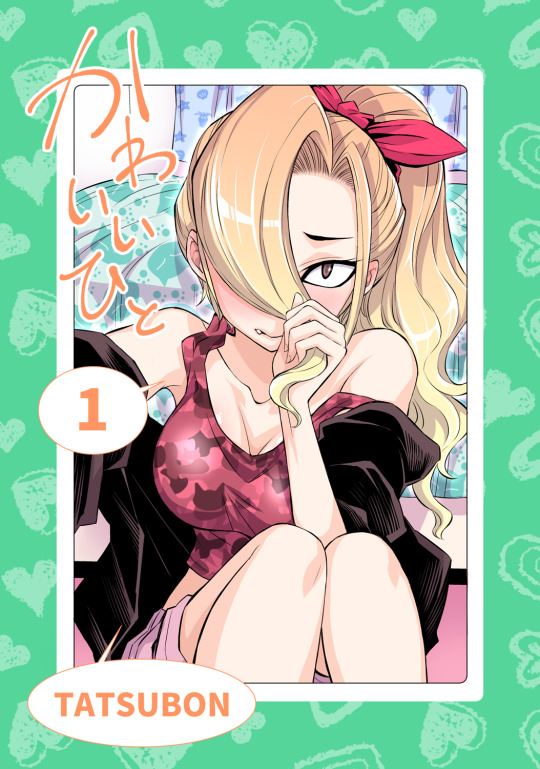
KAWAII HITO (かわいいひと)
A Cute Guy / TATSUBON
Complete, with 36 chapters / 1 volume
F/M; Romance, Comedy + fem m, sub m, dom f, role rev, genderbender, gb: mtf, cross dressing, taller f x shorter m, queer & ambqueer, ambiguously genderqueer
SUMMARY: Kenzaki, a female yankee, has a crush on Nakajima, a boy who gets constantly teased in class. One day, she saves him from his bullies, bringing the two to become closer with one another.
Shortly after, Kenzaki notices a girl who looks a lot like Nakajima. However, it turns out that it is indeed Nakajima crossdressing!
MAL score: 6.62 AL mean score: 67% MU average: 6.7
PERSONAL SCORE: 8* out of 10
*currently unfinished; score might change
#the reason my score is so high despite this being a very simple manga is because it manages to stay true to its premise#the boy does not want to become manlier. the girl does not want that too. she loves him being feminine and that is actually so damn rare#just for this fact this manga is dear to me#oms listing#kawaii hito (tatsubon)#tatsubon#a cute guy#mypost#l: kawaii hito (tatsubon)#l: f x m#l: fem m#l: sub m#l: dom f#l: role rev#l: genderbender#l: gb: mtf#l: cross dressing#l: taller f x shorter m#l: queer & ambqueer#l: ambiguously genderqueer#(i believe the girl is ambiguously bi and the boy is ambiguously genderqueer)#personal score: 8
2 notes
·
View notes
Text
The Twins' Relationship Pt. 15 (Migi & Dali Analysis)
This is Part 15 and the FINAL part of my discussion of the twins' relationship and its evolution throughout the story.
Click here to return to the top of the thread (Part 1)
Here, I will summarize everything from the previous parts, in case the reader (including myself!) does not want to read all of them. It's nice to actually remember what I was writing.
This post will be very long, but it is certainly a lot shorter than 14 posts.
Of course, spoilers are discussed.
To keep things simple, I'll just number my points, each item corresponding to each part the thread.
Part 1: In the beginning, before Metry's death, the twins were subtly different, but they were pretty much exactly the same. However, after Metry's death, the twins became drastically different and developed a codependent relationship with each other. Dali became his mother's substitute in all but name, becoming extremely protective of Migi, and tried to maintain a perfect image to serve as a good example for him. Migi basically became like Dali's child, always listening and obeying Dali, trying to be like Dali, and emotionally reliant on Dali.
Part 2: The twins' arrival in Origon Village presented some potential problems in the twins' relationship. The events of the welcoming party hinted at Dali's insecurity, perhaps fearing that Migi may leave him if he wasn't careful, and he brought Migi to Metry's grave to stop this from happening by reminding him of their purpose. Their visit at Akiyama's house revealed Migi's hidden feeling of always being screwed over by Dali, and their visit at Maruta's house revealed Dali's overprotectiveness of Migi, though this wasn't properly addressed. It can be seen that the twins ironically did not communicate their feelings to each other, which caused issues later on.
Part 3: The twins' next adventures in the manga revealed even more about the twins' relationship. Migi's exercises in imitating Youko showed his desire to please Dali and make him proud. The bedwetting chapter showed Migi's admiration for Dali but also his insecurity and fear of disappointing Dali, as well as Dali's determination in maintaining his image, even if it meant lying to Migi. Migi's solo mission in boy scouts highlighted his desire to make Dali happy and proud of him, as well as his insecurity of not being able to meet his brother's expectations.
Part 4: The twins' first visit to the Ichijo house and the proceeding investigation demonstrated Migi's reliance on Dali for comfort and emotional support, as well as Dali's suppression of his own emotions to properly look after Migi, which definitely contributed to problems in their relationship. It's likely that Dali was primarily motivated by a desire to help Migi in pursuing revenge for their mother.
Part 5: The school arc only added pressure, as Dali's insistence on joining Class 1-1 (perhaps for hidden reasons) via getting good test scores was something that Migi just could not accomplish normally. Dali saw no other choice but to use the Sali disguise to trick Migi into studying harder. While Dali probably did enjoy the time spent observing his brother in disguise, he ultimately came to regret this decision as he realized how much he had wronged his brother who trusted him so much. He likely began to resent himself as he realized that in his mission he had failed his duty as the older brother. It's also worth noting that at this point, there was no way that the twins would be okay separating from each other, despite Migi's words to "Sali" at the aquarium.
Part 6: The Ichijo house arc once again highlighted key aspects in the twins' relationship. Migi's willingness to give himself up for "stealing" the button showed how devoted Migi was to Dali, willing to sacrifice himself for Dali. Dali's protectiveness and anxiety rose to new highs since Migi was in a very risky and dangerous position, especially after Micchan disappeared. Dali desperately wanted to take Migi and leave, though Migi refused, wanting to continue with the mission (even though Dali was tired and starving). Eventually, the twins were able to make discoveries in the house, though the incident was rather traumatic, especially for Dali. Out of love for Dali, Migi cleverly tricked the Sonoyamas into pampering him, though the bigger problem was left unsolved. Namely, there still existed a communication barrier between the twins, such that neither of them could properly perceive the love that the other had towards them.
Part 7: The "return of Sali" arc and the resulting separation was a result of the barrier between the twins. Namely, Dali's desire to protect Migi from the dangerous Ichijos led to him investigating alone as Sali. Though Dali may have had good intentions and did this out of love for Migi, he didn't realize how much his actions would hurt Migi. Meanwhile, Migi wasn't happy that Dali pushed him away, but he was willing to bear through it because he absolutely trusted Dali. The heartbreak was definitely not an easy decision for Dali, as he was forced to choose between Migi's short-term happiness and the mission. Migi's tears definitely bothered Dali, though he was determined to fulfill the mission for what he believed was Migi's sake. Unfortunately, his intentions were not understood, and when Migi discovered the truth, he saw this as a complete betrayal of his truth. He was broken over the fact that the older brother that he always obeyed and trusted hurt him so much emotionally, and so he decided to run away.
Part 8: The twins' separation highlighted Dali's dependence on Migi. His initial attempt to take Migi back failed, as Migi incorrectly believed that Dali didn't actually love or care about him. Migi thought that Dali only saw him as a tool/slave, and his declaration of freedom emphasized how he no longer wanted to be chained down like this, having to always obey Dali without any reward. Migi's abandonment of Dali completely shocked him and left him angry, though he tried to convince himself that he didn't Migi as he fell deeper and deeper into revenge. But once his scheme to kill Eiji put Migi's life in danger, Dali fell into despair, realizing that Migi was the only person that mattered to him, and that his joy came from Migi. He became wracked with regret, loneliness, and guilt, blaming himself for hurting and driving away his brother, and believed that Migi no longer loved him. Dali's vulnerability was revealed to Migi, to his surprise, as he realized that Dali really did love him and how much he had hurt Dali by abandoning him, and was filled with regret.
Part 9: The twins' close death at the hands of Reiko and their fight at the shrine was the first time the twins revealed their feelings to each other, which helped bring them back together. Dali's heartbreaking sacrifice for Migi revealed both his love for Migi as well as his insecurity, guilt, regret, and self-loathing, as he believed that Migi would be better off without him, a failure of an older brother. This decision undoubtedly traumatized Migi, and he perhaps blamed himself for making Dali suffer like this. Though Migi wanted to go back home while at the shrine, he still obeyed Dali and wanted to stay with him because he did not want to lose him again. Meanwhile, Dali, who was determined to stay at the shrine to protect Migi, did everything he could to make Migi happy, and became frustrated when Migi still expressed a desire to return to Origon Village, believing that he had been replaced, and started the fight. Through their exchange of fists, all of their feelings, insecurities, scars, and regrets were out in the open. More importantly, they revealed their love for each other, and Migi's love and acceptance towards Dali moved him, making him believe that their happiness in the Sonoyama house was worth fighting for. The twins thus were able to settle their differences and reconcile.
Part 10: The twins' return and infiltration of the Ichijo house saw new developments in the twins' renewed relationship. Migi's warmth was able to help Dali (temporarily) overcome his self-loathing and self-esteem issues when revealing themselves to Akiyama, and once Team "Be Birds" was formed, they both seemed glad to have found real friends. Migi's saving of Dali during the infiltration proved that Migi was serious about returning home together with Dali, and Dali was certainly touched by his brother's courageous act of love. As the twins carried a "baby-fied" Eiji away, Dali appeared to be conflicted in his feelings toward Eiji, still blaming him for the suffering they went through, yet at the same time knowing that he's saved Migi. He also knew that his pursuit of revenge almost cost him everything that mattered to him, which was why he started listening to Migi's opinion. Dali's silly face also provided a brief moment of levity, as Migi seemed to be glad and relieved that his normally serious and uptight brother was willing to humble himself for once.
Part 11: After finding out the whole truth from Reiko and Eiji, the twins had a brief disagreement after Dali rejected Eiji. Migi tried using their mother's words to justify accepting Eiji, but Dali refused. He genuinely wanted to know what Migi's real thoughts and feelings were, as he could not see Eiji as anyone but a stranger. But once they discovered Eiji's attempt to kill himself, Dali realized how much he and Eiji were similar. They were both intelligent boys who sought to be perfect for their own reasons, though they were ultimately lonely, hated themselves, and all they wanted was to be loved. But unlike Eiji, Dali always had Migi by his side, and it was Migi's love for him that gave him hope and joy in life. He was grateful to Migi and wanted to give Eiji a chance he never had.
Part 12: Migi could not understand why his serious and rational brother would recklessly endanger himself by going back for Eiji, someone that he had just rejected. He ran after Dali, not wanting to lose him again, and he was confused as to why Dali prioritized Eiji over his own life. Seeing Dali protect Eiji just as he would for him made Migi realize that Dali had genuinely accepted Eiji as his brother. Because he trusted Dali, this was good enough reason to accept Eiji too, as he joins Dali in welcoming and accepting Eiji. His remark about Dali being a "troublesome older brother" re-emphasized his acceptance of his imperfect brother, similar to how Eiji was accepted despite "not being perfect anymore", which Dali seemed to have been relieved to hear. The twins were happy to welcome Eiji into their family, until Eiji decided to turn himself to the police.
Part 13: Eiji's arrest most likely caused Dali to confine himself in Migi's shadow, feeling guilt for everything that's happened, hating himself and believing that he did not deserve to be happy. He lied to Migi to justify his decision, saying that Migi's joy was enough. Yet, Migi sill desperately wanted for him and Dali to live happily with the Sonoyamas, and just could not understand what Dali was thinking. Deep down, Dali shared the same desire, though he couldn't accept it, feeling overwhelmed by guilt, which was illustrated through the Christmas dinner, his nightmare, and his tears. But despite not knowing what exactly was haunting Dali, Migi was able to get Dali to accept himself by reminding him of the love that they shared, that one could only be happy if the other was happy. The twins then officially joined the Sonoyamas and claimed their new happy lives together.
Part 14: The twins and their relationship have clearly evolved over the timeskip. On the outside, nothing much seemed to have changed, where Dali is still the leader and is looked up to by Migi. However, the twins are now much more honest and open with each other than before (especially Dali), and the twins no longer feel chained by each other, which was visualized through the pie braiding as well as Migi's request to bring Sali back. Eiji's return has proven that the revenge storyline has concluded once and for all, with Migi standing together with his brother in as if sharing his burden and responsibility. Finally, the twins separated from each other as they began to lead different lives, though unlike before, they now found comfort and security in the love and acceptance from family, friends, and each other. They were now confident that their bond would endure, no matter how far they went.
Whew, this was an exhausting ordeal. But thankfully, I am left with what I believe is a very good understanding of Migi & Dali, which I think is quite rewarding in itself.
1 note
·
View note
Text
ALICE IN BORDERLAND || a honeybeeadventures review
FULL DISCLOSURE: This review may be a little bit biased and that's gonna have to be okay this time because boy, do I LOVE this show.
If you're a fan of foreign tv shows and you haven't heard of Alice in Wonderland by now, then you may be living under a rock. This show, which premiered during the holiday season of the treacherous year known as 2020, is Netflix's most popular live-action adaptation to date. Yes, that's right, adaptation. That is because Alice in Borderland is based on the manga of the same name written and illustrated by Haro Aso.
This time, I will try to hold back all of my spoilers since this show is full of twists and turns and honestly, deserves a blank first impression going into it. I want to make sure that everyone who watches this show because of my review gets to experience it fully without my recapping the events haha. I will try to summarize without ruining anything, though.
Alice In Borderland is a Netflix Japan Original Adaptation of the manga that bears its namesake by Haro Aso which originally ran from April 2011 to April 2016. The show premiered on Netflix on December 10, 2020, and just 14 days later, a second season was confirmed by Netflix.
The show follows Arisu Ryohei and his friends after they witness fireworks in the middle of the day and are dropped into another world where most of the people in Shibuya are gone and the only way to survive is to risk their lives playing games that extend their visas and their right to live in that world. Every game is treacherous and usually ends with a loss of life, though some games do have finite solutions that can save players and preserve their well-being. Along the way, Arisu ( a name which is the Japanese way of pronouncing Alice, by the way ) meets a cast of characters that will seem fairly familiar to you if you've ever seen, read, or really have ever even heard of Alice in Wonderland by Lewis Carrol or any of its adaptations.
I typically talk about diversity when I review shows, however, as this is a Japanese show, it's not really fair or easy to judge them on that metric because of course, everyone in the show is Japanese ( as they should be since the manga is set in Tokyo ). However, I will say that in the show, there is a character who says that everyone is free to sleep with whoever they want, no matter what gender and there is also a character that is a part of the Alphabet Mafia ( LGBTQIA+ ... I should make a glossary for this blog lol ). While only one ( confirmed ) members of the Alphabet Mafia isn't a lot, it is based on a manga, and considering the manga is written/illustrated by a Japanese man who was in his 30s at the time, I'm gonna chalk that up as the progressiveness of Haro Aso while still wanting to keep his audience.
Now, down to what you really came here for. I'll list the scores below before we get into why I gave them these scores.
Originality of Content: 8/10
Production Quality: 9/10
Resolution: 6/10
Acting/Cast Members: 10/10
Ability to Keep Interest: 10/10
Provocation: 8/10
Obviously, this show did really well by my standards, and here's the breakdown so you can see why.
Originality of Content: 8/10
If we're being honest here, Alice in Borderland definitely isn't the first manga/anime based on the premise of playing a game to survive or get somewhere in the world ( see: Kakegurui, No Game: No Life, .hack//, Gamble Fish, etc. or Rengoku Dead Role which is actually...very similar to AIB ). However, despite this, it still feels like there's some strong originality brought to this concept. Combining the Japanese love for games and a classical western story gives Alice In Borderland just what it needs to easily become a fan favorite. As someone who really favors game-based anime and manga ( because I really favor game design ), I think that the way that Alice In Borderland is a refreshing nod to the genre.
There's a couple of reasons for this but I'll boil it down to just two. The first is that it's not predictable. The issue with a lot of the game-based animes that I'm familiar with is that they are fairly predictable since most games work the same way, but with Alice In Borderland that is different. The rules to each game that is played seem so simple that they seem deceptive but they also seem complex in the way that a riddle is simple yet complex. Every answer that first comes to your mind is probably going to be wrong and you need to think about it more deeply than that. Sometimes, when the rules of the game were being explained, I found myself wanting to pause to see if I could figure out the solution of the game, too, as I watched Arisu think of it, as well.
The second reason is that Alice In Borderland keeps things fresh with its cast of characters. Rather than some characters being evil because that's 'just the way they are', Alice In Borderland really speaks to the effect of the pressure that is put on young people to succeed and how that can end up in them being more mentally lost than they were, to begin with. It also highlights struggles with gender identity, self-worth, complex family relationships, and living up to one's potential. It does this in such a way that even when a character is downright evil, such as Niragi ( IYKYK), there is almost a feeling of pity for them. This isn't because you sympathize with their actions but more so because it isn't difficult to see how the pressure of life turned them into this monster that you are now watching there. I also enjoyed the fact that there wasn't as much dramatic irony in this show as in many others. While dramatic irony is never a necessarily bad thing, it was nice to genuinely be surprised when a character did something instead of knowing that someone was plotting behind someone else's back.
Production Quality: 9/10
This is a statistic that comes with an asterisk of context and that context is that before this, I had been watching Uchu Sentai Kyuranger and if you know what the production quality of that is like then you understand how it may have influenced this show's score a bit. Even without the comparison fallacy of the two, though, AIB scores high in production quality for one reason more than any other to me. For a show with a lot of blood and death, I wasn't unwilling to believe that these people had actually died. Yes, I'm sure that no actors were harmed in the making of this series, however, if I was a little more naive, I might've doubted that a bit. After all, Live Action adaptations are definitely not known for their believability. I will give AIB the benefit of the doubt in saying that this concept wasn't that difficult to pull off since most of the injuries were similar to what you'd expect on your typical action movie set ( compared to...you know...something involving sci-fi or fantasy) but even in the scenes where people get their necks blown off by explosive collars, it looked like they were nearly decapitated...the way that you would expect if someone's neck was blown off by an explosive collar. All in all, if you want to believe it, you will. It's definitely not a hard stretch.
Resolution: 6/10
Okay, okay, so if you've read the manga or have even glanced at the r/AliceInBorderlandLive subreddit then you know this is kind of an unfair score since...well, they're not done. There's more to the story and the eight episodes that we've seen thus far are only about a third of what AIB has to offer since the manga has two sequels, one of which will be finished on Feb. 18 of this year. However, I will see that statement and raise it with "What if it hadn't been such a great success?" I'm all for ending on cliffhangers to force the network or in this case, Netflix to continue your show but since the first season of AIB covers so much of the storyline, it almost feels wrong to end it short the way that it did. I did like how they had the big reveal of the villain at the end and the way they showed what was coming next but it did feel a little anti-climactic when I realized I was on the last episode since it seemed more like a mid-season break type end instead of a season finale. Since there is a sequel to AIB, I wasn't feeling too discouraged but it's definitely something to think about when watching. If you don't plan on reading the manga, you might be left content starving and questioning until sometime near the end of 2021.
Acting/Cast Members: 10/10
If I was just scoring this show on acting, then it would've gotten an all-kill because each and every single actor in this show from the side characters like Nijiro Murakami and Dori Sakurada to Kento Yamazaki who plays Arisu himself is beyond talented and amazing. It is important to remember that all of the characters in this show had a life before they were transported to the Borderland and in this twisted world, something about the changes that make them different than before so in a way, these actors are responsible for not only playing the characters but also the characters past selves before this growth period in which they change into something either completely opposite or completely different than who they were before.
Somehow, this cast manages to take characters that are already so established ( in the manga ) and become them to the point that looking at them within the role and looking at them outside of the role, it almost seems as if they are really two completely different people. As I said before, some of the characters in Alice In Borderland have a correlation to characters from Alice in Wonderland and have their own unique backgrounds on top of that. This gives to the depth of the characters and makes them dynamic but on top of that, it makes them complex, and yet, these actors seem to have the act of embodying these characters down so well that it astonishes me to see them in other roles and know that it's the same person.
I'll be breaking down my three favorite performances to give you a bit of insight on the reason why this show's cast is well-worth looking into.
Dori Sakurada as Niragi Suguru
So let's be honest here, as much as we all like to pretend that we're immune to someone being attractive just because they also prove to be an awful person, but if we're being honest with ourselves, we're not and I am most certainly no exception to that rule. Dori Sakurada is a handsome man whose good looks are only matched in quality by his amazing acting skills. If you're familiar with his work then you know exactly what I'm talking about and if you're not, then I'd recommend watching 3B no Koibito ( Available with English subs on Youtube ) or Scum's Wish ( Available on Rakuten Viki ) to get an idea of how varied this man's acting skills are. In AIB, he plays a character that is somewhat villainous and can almost be classified as your stereotypical movie sociopath. Yet, still, there's something intriguing beyond just his good looks. Dori Sakurada's performance breaths new air into the lungs of the character of Niragi by not only becoming the villain but also, by picking up the mannerisms and master gestures associated with the character that make him such a memorable part of the story. I haven't seen Dori's full Filmography but the character I have seen outside of AIB are a complete left turn from this character which makes me think that the casting director at Netflix Japan needs a raise for having chosen someone who looks so sweet to be such a villain.
Nijiro Murakami as Chishiya Shuntaro
When it comes to characters that become scene-stealers, Chishiya Shuntaro is definitely one of them. This character is so powerful that I, even, named my cat after him. That is a fact of which I am not ashamed. From the second episode of the show, when we are first introduced to him, he becomes an integral part of the framework of the game he is involved in and it is obvious that we will see him again. That being said, there is no way to word Murakami's performance besides 'integral' as my friend put it, "I literally could not imagine anyone else playing this character." As Chishiya, Murakami takes on such a life and ease in the character that it's almost difficult to believe that the sly facial expressions paired with his nonchalant air are not in his nature and are, in fact, something that he donned for the role. I look forward to seeing not only more of Murakami as this character but exploring more of his filmography in general.
Aya Asahina as Hikari Kuina
Kuina as a character is someone that the protagonist does not meet until a few episodes into the show but when it comes to backstories and characters with rich personalities, she shines compared to a lot of other characters I have seen like her. I won't spoil her backstory for you since she's definitely someone who represents something that's a little bit rarer in stories from more reserved cultures but she definitely deserved a mention in this category due to her amazing acting skills and her flawless stunt scenes.
Ability to Keep Interest: 10/10 || Provocation: 8/10
While the rest of my stats got their own individual evaluation, these are going to be combined and the reason for this is because they have the same reasons for their scores. As I mentioned before, Alice In Borderland takes a new spin on the 'play games to live' genre that is so common amongst anime and manga and for that reason, it was able to keep my interest so much so I finished watching it over the course of two days. It was also a deeply thought-provoking situation because the nature of the games and the backgrounds of the characters forced me to think up my own games and my own ideas of where the characters whose backstories are not explained could've come from. That being said, a lot of the thoughts that the show provoked did end up becoming depressing, especially after reading the manga because I discovered that some games could not have had a better outcome due to their simple rules and that made me very sad because even if I am not attached to or fond of a character, I still do not enjoy their downfall.
Overall: 8.5 = DING! DING! DING! WE HAVE A KEEPER!
Overall, I enjoyed Alice In Borderland enough to have rewatched it one and a half times since I first watched it a few weeks ago. As someone who rarely goes back to shows that involve plot twists and suspense because I already know what's going to happen, that really says a lot for not just the storyline but also the acting and amazing intricacies that are in the show. I still feel like each time I watch it, I glean some new detail or fact that I hadn't thought of before and I come to understand the games a bit more with each passing scene or episode. I also feel that the more I rewatch the show, the more I sympathize with even the villains and come to value and understand their motivations and roles. 8.5 out of 10. I WOULD RECCOMMEND.
Thanks for reading!!
#alice in borderland#aib review#alice in borderland review#tv show review#netflix review#alice in borderland netflix#nijiro murakami#dori sakurada#niragi suguru#chishiya#chisiya shuntaro#kuina hikari#aya asahina#kento yamazaki#kakegurui
22 notes
·
View notes
Text
Anime i’ve Watched
That begin with a K (Part 2)!
Yep this is how i’m going to bring over all the anime and manga i’ve watched and posted about on the old blog. It’s not so detailed but it will have to do. Anything new I watch or read from this point on will have their own posts.
Karneval
Genres: action, fantasy, josei, mystery, sci-fi

Synopsis: While in search of his precious friend, a young boy named Nai falls captive to a beautiful woman, whose looks are matched only by her taste for human flesh. Meanwhile Gareki, a clever thief, is in the midst of robbing her luxurious home. After causing a distraction, Gareki agrees to help Nai escape, but they are discovered upon the woman's return. As she transforms into a ghoulish monster, the boys flee. On the run, Nai and Gareki are found by "Circus," a government defense agency that deals with criminal activity too difficult for the police to handle and protects civilians from "varuga"—terrible monsters that devour humans for sustenance. In the hope that it will lead Nai to his missing friend, he and Gareki decide to join Circus. On their perilous journey, they face dangerous varuga and begin to uncover the secrets behind a shadowy organization known as Kafka. [Written by MAL Rewrite]

My Rating: 7/10
Finished airing in 2013 with a total of 13 episodes.
My Thoughts: Love the character design and I was interested in the story but the series is far too short. I’d suggest you go read the manga (which is farther along) but it’s rarely updated so I can’t confidently say it’s worth the read. Your choice is read/ watch this and suffer alongside me with the lack of updates or erase its existence from your mind. Your call!
Kaze ga Tsuyoku Fuiteiru (Run with the Wind)
Genres: comedy, sports, drama

Synopsis: Former ace runner of Sendai Josei High School, Kakeru Kurahara is chased away from a convenience store for shoplifting. Shaking off his pursuer, he runs into Haiji Kiyose, another student from his university. Haiji is impressed by Kakeru's agility and persuades him to live in Chikusei-sou, the run-down apartment where Haiji resides along with eight other students. Having lost his entire apartment deposit at a mahjong parlor, Kakeru accepts the offer reluctantly. However, Haiji reveals a secret during Kakeru's welcoming party: the apartment is actually the dormitory of the Kansei University Track Club. He unveils his ultimate goal of participating in the Hakone Ekiden—one of the most prominent university marathon relay races in Japan. Unfortunately, all the residents apart from Haiji and Kakeru are complete running novices. Worse still, none of the inhabitants are even remotely interested in being involved with Haiji's ridiculous plan! With only months before the deadline, will the fourth-year student be able to convince them otherwise and realize his elusive dream of running in the Hakone Ekiden? [Written by MAL Rewrite]
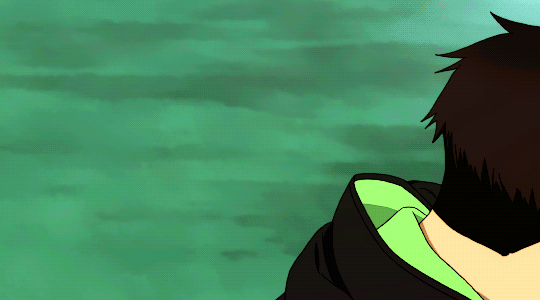
My Rating: 10/10
Finished airing in 2019 with a total of 23 episodes.
My Thoughts: This was a masterpiece in my opinion, an anime I won’t soon forget and one of the best of its season without a doubt! Good stuff right here and not in a high school setting which is a change of pace for a sports anime! A very satisfying anime that I highly recommend.
Kaze Tachinu (The Wind Rises)
Genres: drama, historical, romance, film
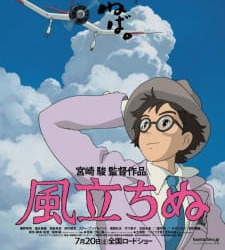
Synopsis: Although Jirou Horikoshi's nearsightedness prevents him from ever becoming a pilot, he leaves his hometown to study aeronautical engineering at Tokyo Imperial University for one simple purpose: to design and build planes just like his hero, Italian aircraft pioneer Giovanni Battista Caproni. His arrival in the capital coincides with the Great Kanto Earthquake of 1923, during which he saves a maid serving the family of a young girl named Naoko Satomi; this disastrous event marks the beginning of over two decades of social unrest and malaise leading up to Japan's eventual surrender in World War II. For Jirou, the years leading up to the production of his infamous Mitsubishi A6M Zero fighter aircraft will test every fiber of his being. From witnessing firsthand the growing antisemitism in Germany to fatefully reuniting with Naoko at a summer resort, his many travels and life experiences only urge him onward—even as he realizes both the role of his creations in the war and the reality of the waning health of his beloved. As time marches on, he must confront an impossible question: at what cost does he chase his beautiful dream? [Written by MAL Rewrite]
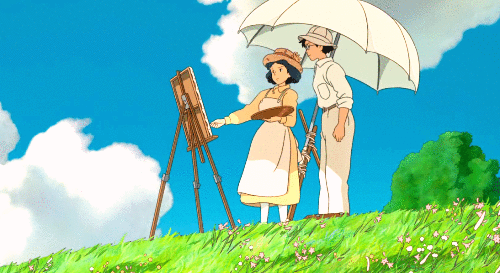
My Rating: 8/10
A film released in 2013
My Thoughts: Beautiful and dreamy but not one of my favourite anime films unfortunately. Still very good though!
Kekkai Sensen
Genres: action, comedy, superpower, supernatural, vampire, fantasy, shounen
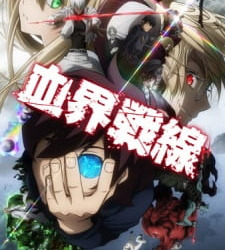
Synopsis: Supersonic monkeys, vampires, talking fishmen, and all sorts of different supernatural monsters living alongside humans—this has been part of daily life in Hellsalem's Lot, formerly known as New York City, for some time now. When a gateway between Earth and the Beyond opened three years ago, New Yorkers and creatures from the other dimension alike were trapped in an impenetrable bubble and were forced to live together. Libra is a secret organization composed of eccentrics and superhumans, tasked with keeping order in the city and making sure that chaos doesn't spread to the rest of the world. Pursuing photography as a hobby, Leonardo Watch is living a normal life with his parents and sister. But when he obtains the "All-seeing Eyes of the Gods" at the expense of his sister's eyesight, he goes to Hellsalem's Lot in order to help her by finding answers about the mysterious powers he received. He soon runs into Libra, and when Leo unexpectedly joins their ranks, he gets more than what he bargained for. Kekkai Sensen follows Leo's misadventures in the strangest place on Earth with his equally strange comrades—as the ordinary boy unwittingly sees his life take a turn for the extraordinary. [Written by MAL Rewrite]

My Rating: 8/10
Finished airing in 2015 with a total of 12 episodes.
My Thoughts: I recall this terribly sad episode that was an absolute masterpiece but to be honest the rest of the series didn’t leave much of an impression on me. I didn’t even bother watching the second season when it came out. Do what you will with that information.
Kenka Banchou Otome: Girl Beats Boys
Genres: action, martial arts, school, shoujo, TV short
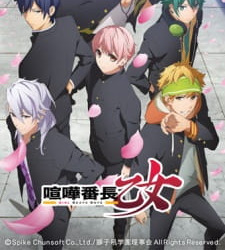
Synopsis: Kenka Banchou Otome - Girl Beats Boys, Hinako Nakayama has spent all of her life being raised in state-run orphanages, without ever knowing her family. As she's about to enter high school, Hinako is approached by Hikaru, a boy who claims to be her twin brother. According to Hikaru, Hikaru and Hinako are the children of the head of the powerful Onigashima yakuza family, and Hikaru wants Hinako to switches places with him at Shishiku Academy, an all-boys school overrun with the nation's toughest delinquents. Can Hinako save her brother, find romance, and become the new boss of the school? (Source: Crunchyroll)

My Rating: 7/10
Finished airing in 2017 with a total of 12 episodes.
My Thoughts: Reverse harem style, tv short with a tomboy female lead. Not really long enough to leave much of an impression but fun enough if you have some time to waste. Surprisingly great art/ animation.
Keppeki Danshi! Aoyama-kun
Genres: comedy, seinen, sports

Synopsis: He is charming, cool, athletic, a good cook, but more importantly, he's a clean freak. Aoyama is idolized and respected by everyone, but they can only admire him from afar due to his mysophobia. Despite that, he plays soccer—a rather dirty sport! As the playmaker for Fujimi High School's soccer club, Aoyama avoids physical contact at all cost and cleanly dribbles toward victory. However, the path to Nationals will not be easy for Fujimi's underdog team. But alongside striker Kaoru Zaizen, Aoyama will show everyone that even as a clean freak, there are things he's willing to get dirty for. [Written by MAL Rewrite]
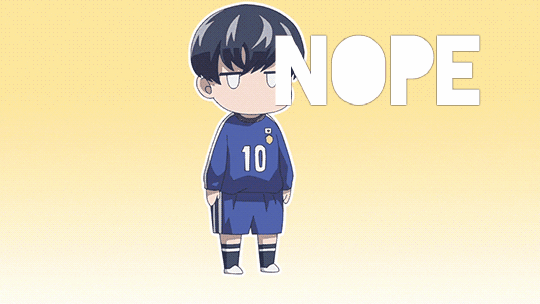
My Rating: 7/10
Finished airing in 2017 with a total of 12 episodes.
My Thoughts: comical with what I recall to be very little focus on the actual playing of sports which is a bummer if that’s what you’re looking for. It was alright but there are definitely better comedy (and for sure sports) anime's out there!
Kill la Kill
Genres: action, comedy, superpower, school
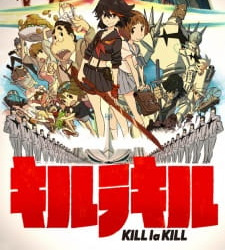
Synopsis: After the murder of her father, Ryuuko Matoi has been wandering the land in search of his killer. Following her only lead—the missing half of his invention, the Scissor Blade—she arrives at the prestigious Honnouji Academy, a high school unlike any other. The academy is ruled by the imposing and cold-hearted student council president Satsuki Kiryuuin alongside her powerful underlings, the Elite Four. In the school's brutally competitive hierarchy, Satsuki bestows upon those at the top special clothes called "Goku Uniforms," which grant the wearer unique superhuman abilities. Thoroughly beaten in a fight against one of the students in uniform, Ryuuko retreats to her razed home where she stumbles across Senketsu, a rare and sentient "Kamui," or God Clothes. After coming into contact with Ryuuko's blood, Senketsu awakens, latching onto her and providing her with immense power. Now, armed with Senketsu and the Scissor Blade, Ryuuko makes a stand against the Elite Four, hoping to reach Satsuki and uncover the culprit behind her father's murder once and for all. [Written by MAL Rewrite]

My Rating: 9/10
Finished airing in 2014 with a total of 24 episodes.
My Thoughts: One of my top three favourite anime's of all time despite my not giving it a perfect score and the sole reason i’m such a Trigger fangirl despite the way they continue to disappoint me with each and every new release... Highly recommend! Fair warning there’s plenty of skimpy outfits and fan service which may turn some off but if you can get past it this really is an anime worth checking out. Great story, characters, music and style! A chaotic feast for the eyes and ears! I really should rewatch it...
#Karneval#kaze ga tsuyoku fuiteiru#kaze tachinu#films#kekkai sensen#kenka bancho otome#keppeki danshi! aoyama-kun#kill la kill
69 notes
·
View notes
Note
Oh right, I forgot to ask now that you finished the Yakuza/Overhaul arc but on a scale from Endeavor to All For One, where does Overhaul fit on the bad dad scale?
somehow this very simple ask which could have been answered in like three sentences turned into my definitive ranking of the top ten Known Dads in BnHA. I’m not sure how either. but here we go
(spoilers in this post up to chapter 165!)
10. Overhaul
dad score - [unknown] [the scale broke when we tried to measure him]
is asked to care for his boss’s granddaughter; proceeds to torture her for profit
constantly tells her that she’s cursed and all the bad things that he does are somehow her fault
doesn’t even bother to give this kid some fucking shoes
keeps killing her babysitters
I know I already said it, but it really can’t be stressed enough, this guy routinely disassembled her limbs on a molecular level, causing her excruciating pain and trauma, for the sake of trying to make himself the new drug-dealing kingpin of the underworld. he is sooo bad you guys
9. All for One
dad score - 11/100
is super creepy and manipulative and purposely brainwashed Tomura into hating All Might through a series of meticulously calculated encounters
decided the best way to help Tomura reach his full potential would be to step out of his life and get himself arrested
hasn’t even seen his other son, Izuku, since he was a baby! what a fucking deadbeat smdh
but on the other hand, he does seem supportive and indulgent towards Tomura and gives him lots of praise and encouragement
8. Endeavor
dad score - 39/100
abused his kid
abused his kid’s mom, in front of his kid
you wouldn’t even know it, but he actually has other kids, whom he never seems to acknowledge or pay even the slightest attention to whatsoever!
only had kids in the first place so he could raise his kids to beat All Might. has no problem telling this to said kids and even to All Might’s own face
having said that, the only reason his score isn’t in the negatives is because as of chapter 165, it seems like maybe? possibly? he just might be trying for the first time ever. or like. trying to try. if you can count showing up to Shouto’s supplemental course to shout “SHOOOOOOOOOOUUUUTOOOOOOOOO” at him from the stands as trying. but like, I feel like he is attempting to be encouraging. it doesn’t mean he’s not still a piece of shit, but if the guy is trying to be better then, like, it’s better than him not trying, you know?
but he’s still terrible
7. Kurogiri
dad score - 60/100
Tomura’s Actual Dad
is calm, rational, polite, and a respected doctor of medicine (probably) (idk you guys I just still get that vibe)
took Tomura and all the other kids on a character-building trip to Villain Island in an omake from chapter 149 which I consider to be canon
there’s nothing more dadlike than taking your kids camping and trying to teach them how to survive in the wilderness
taught Tomura how to get along with others
always seems to have his back, which is real important you guys
6. Gran Torino
dad score - 70/100
not the best score but a C is still respectable. mostly it’s just cuz he was out of the picture for so long. although we’ve since found out that Toshinori by his own admission had a habit of pushing away people who cared about him, so that may have had something to do with it
cares a lot about Toshinori even though he’s shit at showing it
made him into a man by beating the shit out of him until he got super strong
was right there in the thick of things with Toshinori during both of his fights against All for One. he straight up risked his life to back him up against the strongest villain alive
took it in stride when he found out he had a grandson that he’d never met, and took him under his wing as well and raised him for like three whole days and taught him how to use a microwave
5. Ochako’s Dad
dad score - 80/100
I probably should have given him a higher score, honestly. he seems really sweet. he’s probably a better dad than Bakugou’s Dad tbh, but Bakudad gets the edge just for the much steeper difficulty level. because let’s be honest, there’s a biiiig difference between raising a sweet baby angel like young Ochako, and raising a sentient roman candle with a potty mouth
but he works so hard to make ends meet, and somehow he and his wife managed to scrimp and save enough to send Ochako to U.A. because they wanted her to follow her dreams and they want the best for her
and they’ve always been so supportive of her on like the three occasions we’ve seen them in flashbacks or talking to her over the phone or visiting her after the sports festival
look at this thumbs up though

tell me that’s not the most dad thing you’ve ever seen in your fucking life
4. Bakugou’s Dad
dad score - 82/100
has like two lines in the entire series, but
as previously mentioned, raised Bakugou Katsuki and somehow survived to tell the tale. so honestly he probably deserves some kind of medal
also, since we know virtually nothing about him other than what was in the omake profile from volume 11, I’ve been imagining him as being kind of like Calvin’s Dad from Calvin and Hobbes

so he gets bonus points for that positive association
really there’s no reason for him to be this high up tbh except that I firmly believe he’s a great dad and I’m just waiting for canon to prove me right. I’ll be right here waiting, manga
3. RockLockRock
dad score - 90/100

he’s awesome
also, look. being a hero is inherently dangerous. you never know where you’re going to get called to next, and any mission could end up being your last. injuries and trauma go hand-in-hand with the job. most of the hero characters we’ve seen don’t have families, and I have to assume that’s not a coincidence. so to me, all of this means that if a hero character actually does go through with starting a family, it means they wanted that family more than anything, and you can bet they freaking love the shit out of said family. I have no doubt that RLR is and will continue to be an amazing dad
plus his kid is just too damn cute
2. Aizawa
dad score - 95/100
first of all, if this was a ranking of Hottest BnHA Dads, you better believe he’d be at the very top and it would be no contest
he has 20 kids and somehow he’s able to handle each and every one of them
risked his life to save the kids barely two weeks into the school year with no hesitation, even though he nearly died
did the same thing again barely two months later. this time thankfully without the nearly dying
has the total respect and trust of each and every kid in his class. and considering the personalities of some of them, that’s no small feat
specifically, it says a lot that even Bakugou doesn’t give him any lip and always listens to him without complaint and is even polite
speaking of Bakugou, he defended him to that Jerk Reporter during the Hideout Raid arc and proved that he understands his students better than anyone
isn’t afraid to deal out strict discipline when the situation calls for it, but it’s always for the students’ own good
isn’t above trolling the shit out of his kids on occasion when he feels like it
is good with kids of all ages and not just teenagers, as evidenced by how good he also was with Kouta during the forest invasion arc
lastly, as we saw in chapter 136, he has an untold repertoire of secret dad moves just waiting to be unleashed, such as (a) crouching down to a seated Deku’s eye level, and (b) gently punching him in the chest while affectionately calling him by a nickname. who knows what other moves this man has in reserve. I for one can’t wait to see more
1. All Might
dad score - 96/100
indisputable best dad. A+. although even he didn’t get a perfect score, because nobody is perfect and there’s always room for improvement
always knows exactly what to say. despite constantly seeming to stress about it. probably he only stresses because he cares so much and he’s worried about doing things exactly right
loving father to the two most difficult children in the whole series, Midoriya “which bones did you break this time” Izuku, and Bakugou “like I said, anyone who even attempts to parent this child automatically deserves a medal” Katsuki
this man literally got down on his hands and knees and begged Deku’s mom to let him try to be the Best Dad Ever to her child. he loves him so fucking much
gives THE best dad hugs

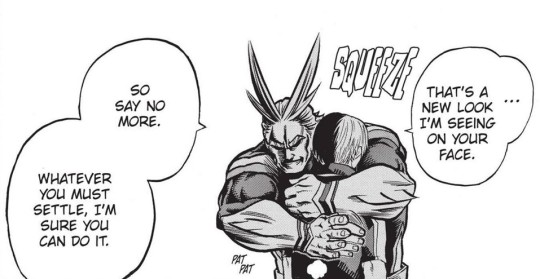

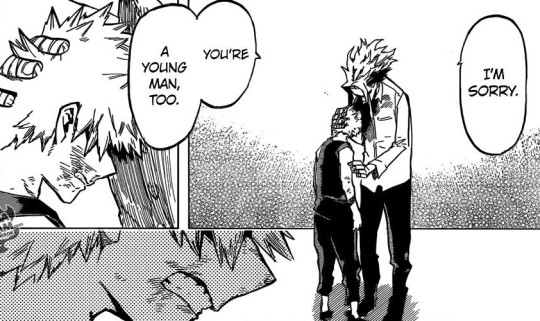
I need more All Might hugs
honorable mentions:
Nighteye (I forgot about him until after I had already made the list and was too lazy to go back and insert him in his rightful place at number 3. 92/100. loses points for FUCKING DYING AND MAKING ME CRY)
Fat Gum (same deal as Nighteye in that I forgot about him. 75/100. he’s loving and jolly and gives out free candy, but he let Kirishima get all beat up. BE MORE CAREFUL NEXT TIME)
Vlad King (haven’t seen his dad skills in action much, but according to his profile he’s nicer to his kids than Aizawa is. okay but DID HE NEARLY MAKE THE ULTIMATE SACRIFICE FOR THEM though. because Aizawa did. 85/100)
Present Mic (not a dad. is at best a Weird Uncle. 70/100)
Jirou’s Dad (I forgot about him too lol. he’s a wacky dad who likes to rock and roll! he tried to be a Stern Dad to impress All Might and Aizawa but failed miserably. took his wife’s last name!! so secure in his own masculinity. wants his daughter to live her best life and follow her passions. 93/100. he’s fucking great)
#bnha spoilers#mha spoilers#makeste reads bnha#asks#kind of weird that ochako's parents still don't have names (at least as far as i know)#even jirou's parents do#oh shit i forgot to add jirou's dad lol#gotta edit him into those honorable mentions#okay there we go#bnha top ten#bnha ranking
137 notes
·
View notes
Text
qb anime of the year list 2018
Anime of the Year 2018 - the year of girls going to aquariums together
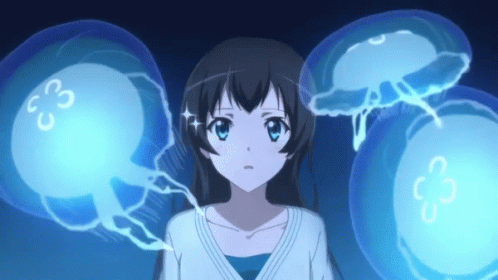
I’ve seen at least one person who claimed that 2018 was the best year for anime in recent memory and I’m inclined to agree. A large majority of my top ten list is shows that I would consider perfect and even shows that blew away what I thought was possible in the medium. It was a revolutionary year and makes a strong argument that anime wasn’t a mistake after all. - qb
#1
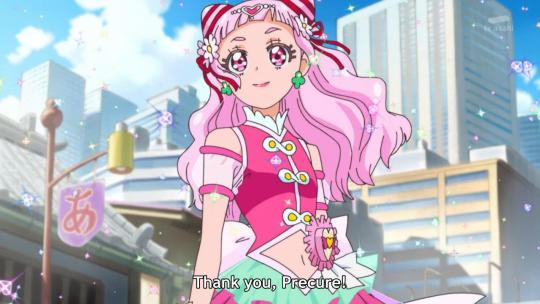
Hugtto! Precure blew away my expectations every week for close to a year. I don’t exactly know what to say about it here, since this isn’t the last time I’ll talk about it for sure. It doesn’t even end in 2018, but it was such a huge part of my 2018 in anime that it would be inaccurate to not include it. The only way I can think to explain Hugtto! Precure is to talk about the Netflix She-ra reboot. She-ra’s a pretty basic modern Dreamworks cartoon, with some interesting ideas thrown in and likable characters, but mostly held back by what they could realistically allot for production. Because of this limitation, She-ra goes hard on a single perfect episode (if you’ve seen it, you know which one) that stands out in a big way and shows the full potential of what they set out to make. Usually, Precure is lucky to get a handful of these stand-out episodes in a season, and most of the time just gets by, due to being an annual series that can never, ever take a break. Normally, the first few episodes of a Precure season can be counted on to be strong, but the realities of anime production being hella tough inevitably catch up.
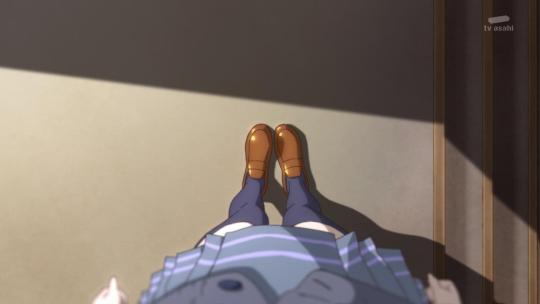
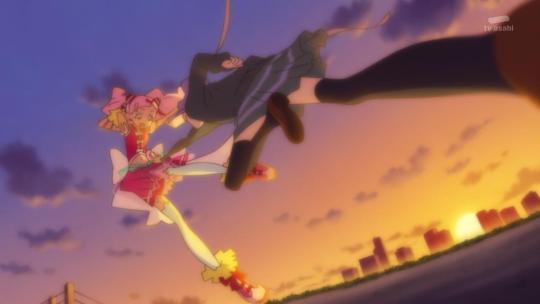
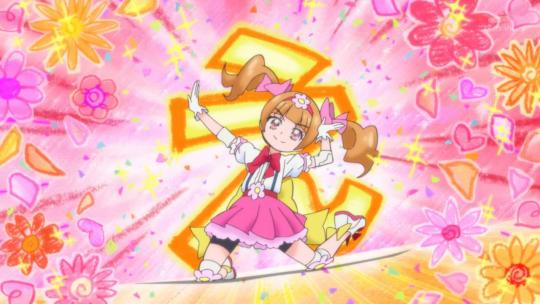
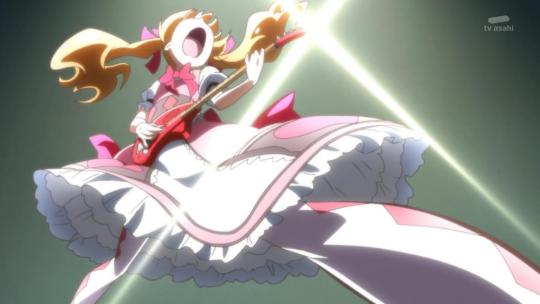
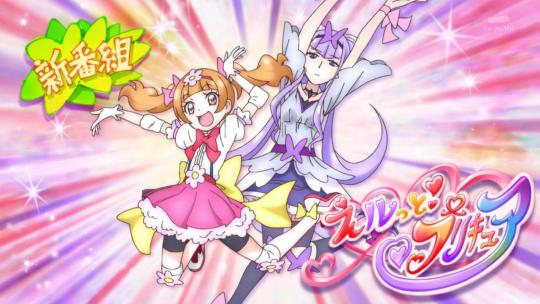
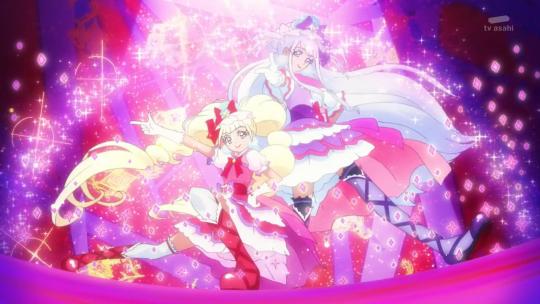
Hugtto! Precure started with an incredible opening arc, then never let off the gas pedal. Nearly every episode of Hugtto is a stand-out, never-before-seen, innovative tour-de-force. The combination of production miracles that resulted in Hugtto has been talked about by me on this blog before, (http://vanilla-blessing.tumblr.com/post/176000267859/hana-is-getting-unstable-a-pink-precure) but the length of time that Hugtto stayed in the paint, going extremely hard every single week with few exceptions, was just absurd. Every season of Precure has one or two peaks, sometimes a good season gets lucky and has even more, the best seasons bat a solid average, but are still expected to be held back by reality. Coming out of the fifteenth season of Precure with a majority of the best episodes in the entire franchise isn’t something that I can wrap my head around, but it definitely happened, mostly in 2018. It’s simultaneously a love letter to the franchise’s past, present, and future made by the biggest Precure fans on the planet, and it’s unquestionably the best season. Hugtto threw what we all knew was true and had accepted about Precure clear out the window, retroactively made older seasons better, watered my crops, brought world peace, ect.
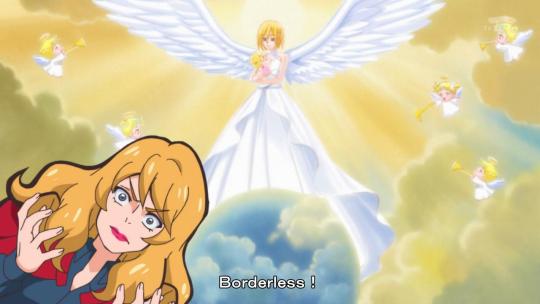
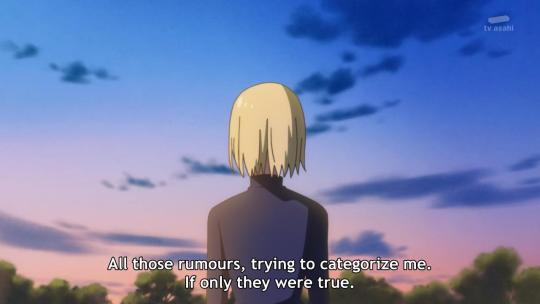
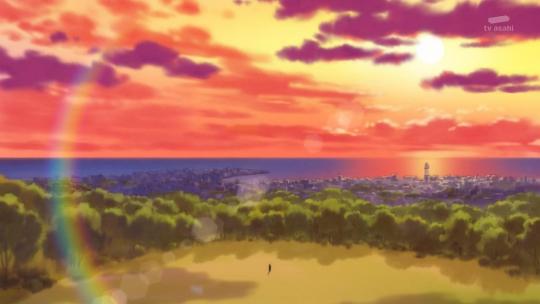
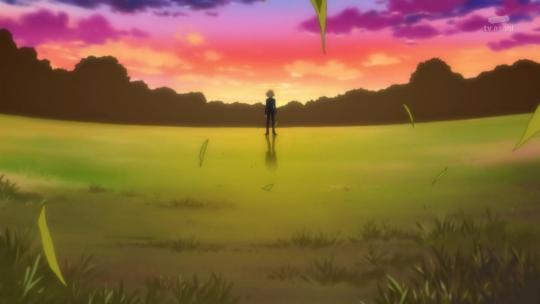
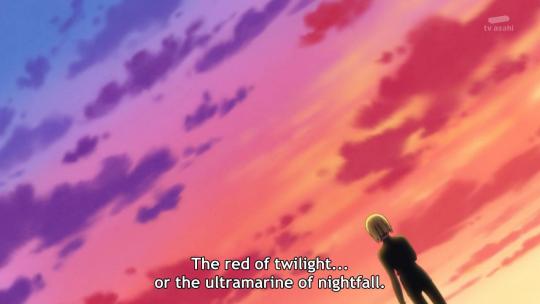
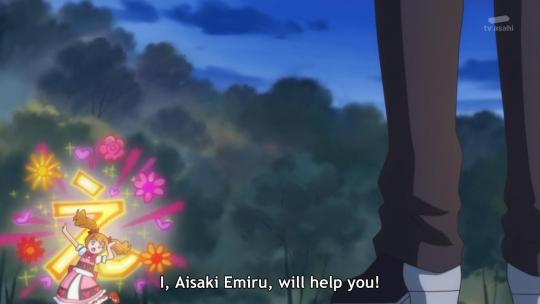
Oh yeah and boys can be cures now.
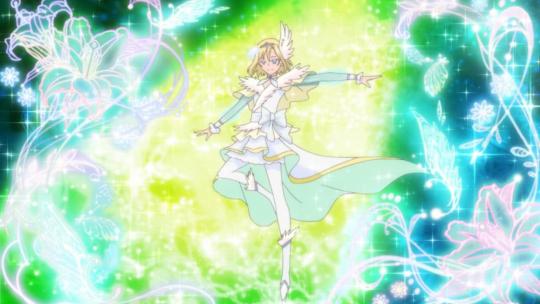
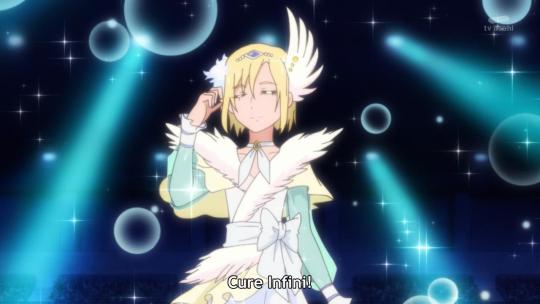
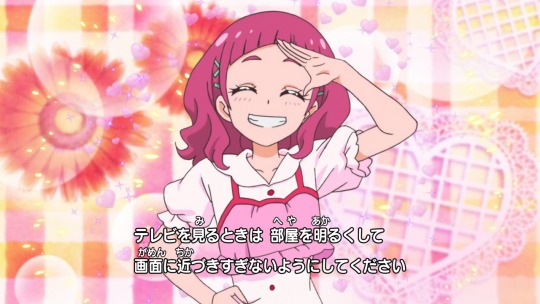
#2
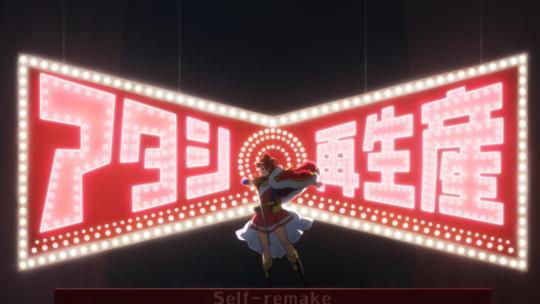
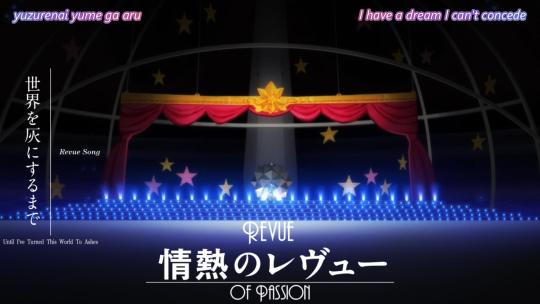
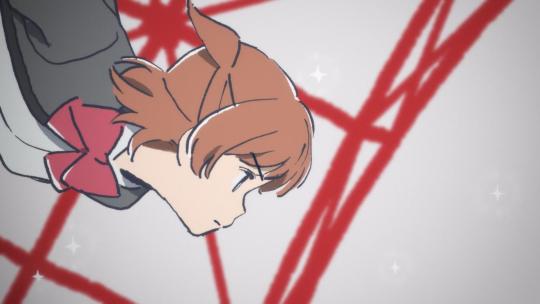

I’m definitely not done with Revue Starlight and this won’t be the last time I talk about it. Revue Starlight essentially carried the Summer 2018 anime season on its back. Starlight absolutely dominated my anime watching schedule; my week was seriously just waiting for and watching different translations and releases with every other show being almost incidental, far less important than waiting for the song lyrics to get translated for an episode I had seen three times already. I won’t get into everything here, since I’ve already talked about it on this blog after all (http://vanilla-blessing.tumblr.com/post/179023723689/subtext-is-for-cowards-revue-starlight), but I need to reiterate that it was such a commanding, unique, stylized experience and didn’t drop a single episode in its entire absurdly high-level production. The only reasonable explanation for this is devil magic, and hell, it was worth it. Revue Starlight is probably in my top 5 anime of all time and I wouldn’t get this list out if I said everything I wanted to say about it. It’s great. Watch it twenty times.
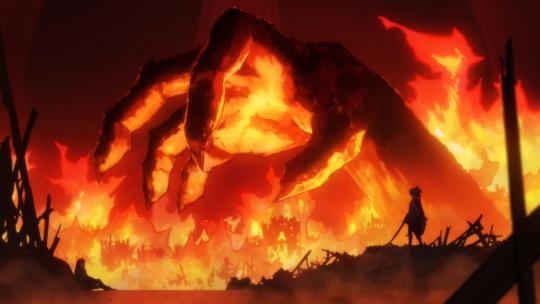
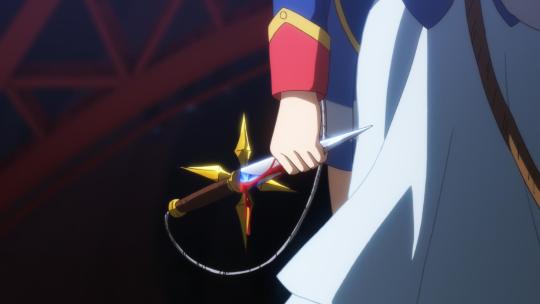
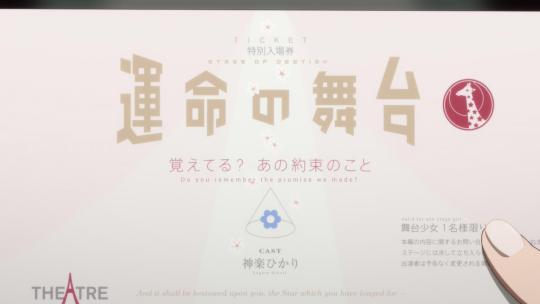
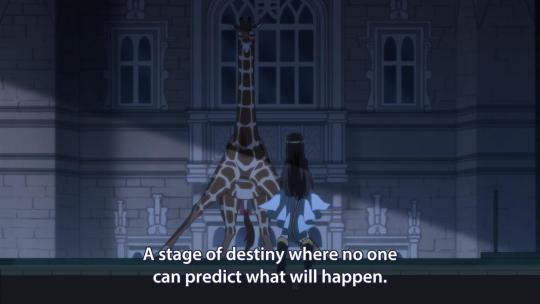
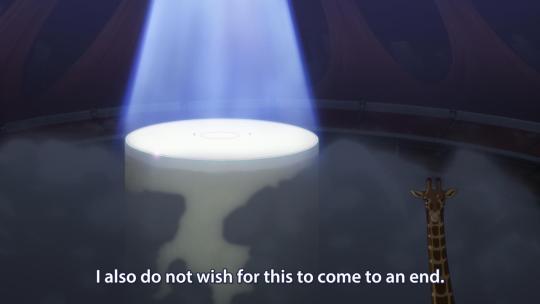

#3

Pop Teen Epic, or Hoshiiro Girldrop, was the most wildcard that has ever been in seasonal anime, and could have been absolutely anything. What none of us predicted was just how much of anything this show would be, encompassing an unprecedented range of artists, voice acting talent, and whatever AC-bu are, each giving their very individual takes on a self-described shitpost comic strip, sometimes covering the exact same material two or three times, with no regard for any sort of cohesion or structure.

Nothing about this idea should have been funded, nothing in Pop Team Epic has any reason to work, and as a straight adaptation probably wouldn’t have worked. PTE spun gold from trash through the raw effort of artists doing their own thing, which captures the original spirit that made the formerly-cancelled comic popular in a way that’s much too intelligent for haters to understand. Also it got a dub, which is the most ridiculously bad idea i’ve heard in my life, and it owns that it happened.
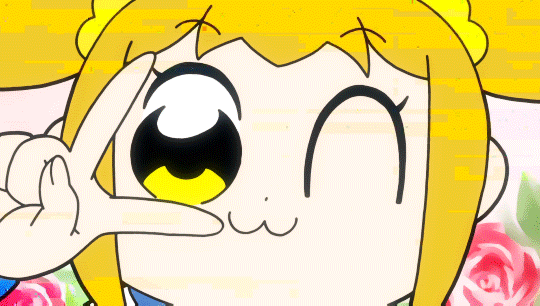
#4
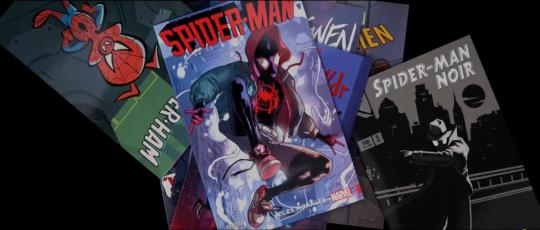
Spider-man into the Spider-verse is legit the best comic book movie ever made. It’s a fun, expressive twist on the most tired superhero origin story of all time, and showcases some of the most sssssssssstyle and raw, real emotion I’ve ever seen in animation. Its particular selection of influences is brilliant and poignant, rising far above the simple fanservice you’ve come to expect from Spider-man. The unrelenting individualistic spirit of this movie will stick with you the longest in the soundtrack, bravely incorporating a side of pop music that you don’t usually get to see in big-budget productions, pulling soundcloud rappers out of their grody (i’m told) dens into the spotlight with equal importance alongside the heroic score. Spider-verse is all about establishing your own unique flavor, and it manages to overwrite every other entry in this cursed franchise with its bold taste.
youtube
youtube
#5
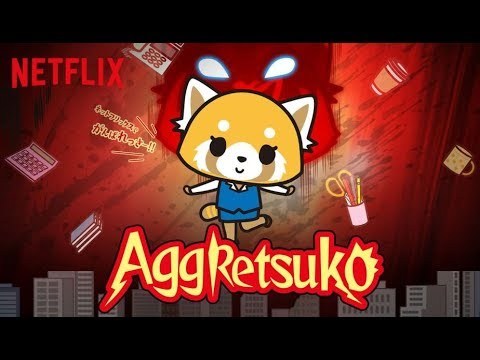
It doesn’t make sense to me how amazing Aggretsuko’s dub is. The impeccable timing of each line, the perfect integration with the comedy, and the optimal length of the episodes are all far beyond what I expected from a Netflix show. It not only converted the original series of shorts that I already had on my top 10 the first year into a godlike longer series I didn’t know I wanted, but went to the effort to bring real metal singers in for the karaoke. Honestly just repeat everything I said in my 2016 list and multiply it by five. I hope they make more. They’re making more.
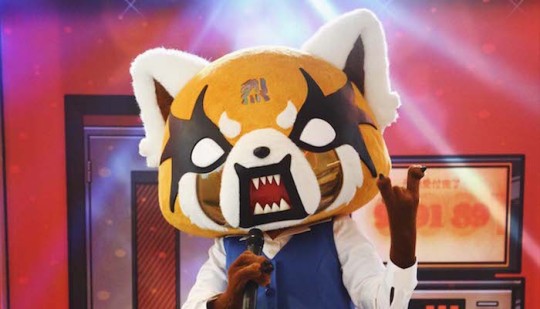
#6
youtube
I was pretty slow to pick up anime in the Winter 2018 season, but I never missed Hakumei and Mikochi, maybe because it was like, the only simulcast on my favorite online anime streaming subscription service HiDiVE. The subs weren’t great, and it certainly wasn’t all that popular, but it was just the relaxing show I needed. Hakumei and Mikochi brought me back to my favorite non-racist parts of the Redwall series of books: friendly animals, delicious foods, alcohol, and rustic songs. I was ready to put it on my list for simply being a cute healing foodie anime, but to my surprise, it had much more in store within its tiny world: stark confrontations with mortality, a shy riverside necromancer, the inexplicable remake of The Raid: Redemption in miniature, fashion trends, frogs, carpenter weasels, carpenter skeletons, ghost celebrations, a country beetle with lofty dreams. The list of memorable people, places, and things contained in the gnomish roommates’ tiny world goes on and on.
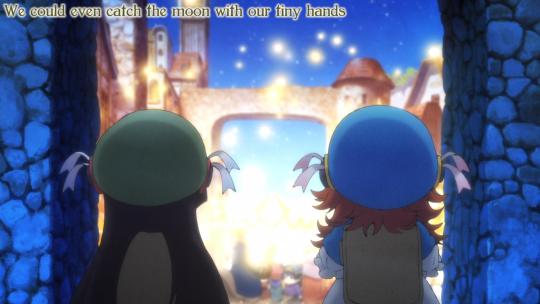
Masaomi Ando’s directing went completely along with the storybook aesthetic, maybe even to an overall detriment, which is exactly the kind of reckless commitment to style I love to see. The distinctive paneling, constantly gorgeous backgrounds, and deliberate pacing perfectly captured the imaginative stories I loved to read as a kid, but with more alcohol, and more sophisticated themes under the surface. Even something anime rarely get right, endings, were perfectly capstoned every week with a short digest that explored more of the history, legends, and very personal lore of their small, unique world. At its core, Hakumei and Mikochi is the calming story of tiny roommates you think it is, but it’s also so much more. They have day jobs and get drunk and remodel their house after it explodes that one time. They gamble dangerously to escape a blizzard, help a photographer give herself a little credit, and rescue their neighbor from a fancy grave of her own making. By the end of the show Hakumei practically built half a town. The collective stories from their everyday adventures build into something tremendous, and it all wraps up on the most perfect ending sequence I could have hoped for, which calls back to every story thus far as a new verse of the show’s central duet is sung. In any reasonable AnimeOTY Hakumei and Mikochi would be my top anime of 2018, but this year, the competition was unreasonable. This show will just have to settle for being the best regular anime of the year.
youtube
#7
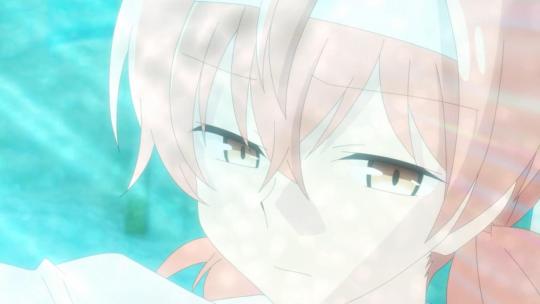
Bloom Into You is an incredible adaptation of an apparently yuri romance manga that raises the bar for anime adaptations in general. I don’t know when, but somewhere along the line I stopped expecting that serious capital R Romance anime would have a distinctive style, and gave up to the notion that there was no demand anymore and a stylized, seinen/josei romance would just never get made. Well that was 2016 and then Scum’s Wish happened which this blog has covered extensively.(http://vanilla-blessing.tumblr.com/post/168842023559/how-lerche-adapted-an-average-trashy-romcom-into, http://vanilla-blessing.tumblr.com/post/168789506264/scums-wish-and-our-messy-uncomfortable) To me Bloom Into You feels similar in concept, as a difficult romantic situation with no easy answers or completely happy people. The main perspective character, Yuu, is among my favorite romantic leads in any series; she doesn’t get romantic feelings, although she wants to, and despite being easily motivated, is kind of dispassionate. Her relationship that she was pushed into with Touko might as well be out of mutual convenience, since Touko doesn’t want to fall in love with someone who would love her back, and Yuu doesn’t think she can.
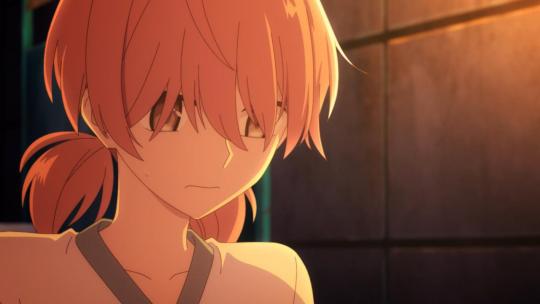
Yuu filters the developments of the series as they grow closer through a very different perspective compared to more emotional leads of usual romance stories, methodically breaking down and considering where she’s at, observing where others are at, before taking an action that makes sense to her. Her growth through the series takes a very different direction than the common dramatic formula; instead of running headfirst into misunderstandings to overcome romantic challenges, she’s compelled to take a step back and position herself in a way that allows her to understand and confront her girlfriend’s issues. The changes that she experiences herself during this process are extremely gradual, but are no less significant to her. Although the dramatic weight of the series is obviously all about Touko, the central thesis of Bloom Into You is to explore Yuu’s complex feelings, and ask to what degree our actions are dictated by our emotions. It’s a heavy topic to be sure, but what makes this anime adaptation special in particular is how the directing and production pull it off, to maybe an even stronger degree than the original material.
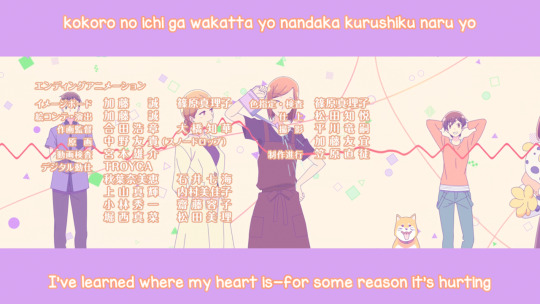
Bloom Into You’s most striking and noticeable feature is the incredible conservation of small movements that connect expressions naturally. Minute changes in characters’ faces are vital to observe the almost imperceptible changes in Yuu over the course of the series, and every aspect of the direction is in service of highlighting these subtle moments. In addition, repeated cinematic themes are reinforced over the show’s run, such as the use of light to impart a blinding realization, flower language to inform deeper personalities, even using a literal (not literal) cinema. Symbols such as trains, masks, and mirrors are used constantly and consistently to reinforce the show’s themes, which should be immediately obvious from the opening animation. I’m still kind of stunned that Bloom Into You’s ending theme is such a banger and managed to use an oscillating sine curve in a metaphorical way. These details might be lost without the brilliant layouts, intentionally resembling a stage, which always push the minute differences front and center. As an anime adaptation, Bloom Into You adds so much value in such a subdued, conservative way that it puts uninspired adaptations to shame.
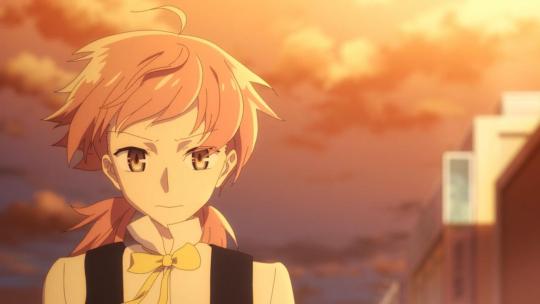
#8
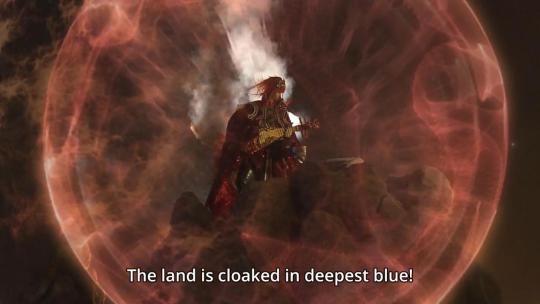
Thunderbolt Fantasy 2 rounded out the year with a good old new-fashioned Japanese-speaking Chinese-Wuxia Taiwanese puppet show. The novelty of this wild series, like, existing at all, is still incredible to me, but I was really wowed by the new characters and the direction the series went in after the already high standards of the first season. Following the outrageous action and fights of the previous season, I did not expect that season 2’s introductory goon would 1. Live past the first episode 2. So quickly become my favorite swordfighter and 3. Have inarguably the most complete character arc of the entire show thus far. The Princess of Cruelty’s struggle against her inner and outer demons in a unreasonably stacked, desperate situation developed her into easily the most compelling character of the season, and the rest of the cast including a corrupt police officer with extremely disconcerting and bad puppet teeth, a ventriloquist rock-lutist, and a nihilist monk each bring their own unique flavors to the table. The table that they throw the puppets in the air from to make the show. All of the new elements of Thunderbolt Fantasy 2 improved an already strong formula even more, and revealed an emotional depth to the series that I’m excited to see developed further. Some people might not call this anime, but those people haven’t seen Thunderbolt Fantasy for longer than 2 seconds. It’s so anime.
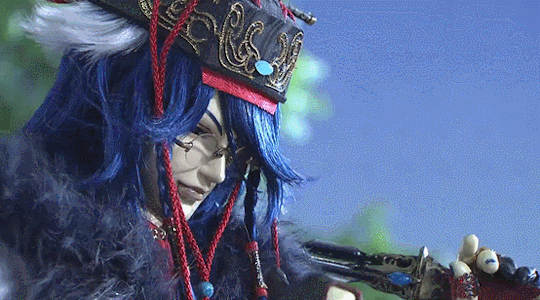
#9
I blasted all available seasons of Star vs the Forces of Evil early in 2018, and it was basically my first foray into straight-up American cartoon magical girl, despite watching all the Japanese ones, which was probably an oversight on my part. That’s because Star Versus is really good, and provided a flavor of magical girl I had been missing out on. I could talk about the excellent sparkle witch aesthetic of the show, fluid animation, and hilarious comedy, but I’d rather spend this blogspace posting Star Butterfly faces.
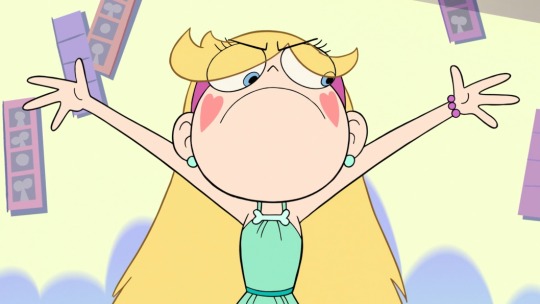
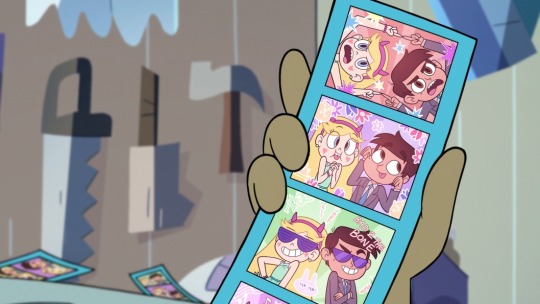
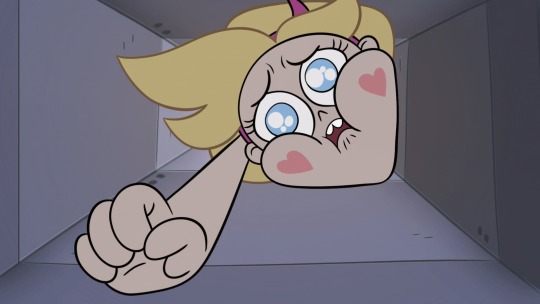
#10
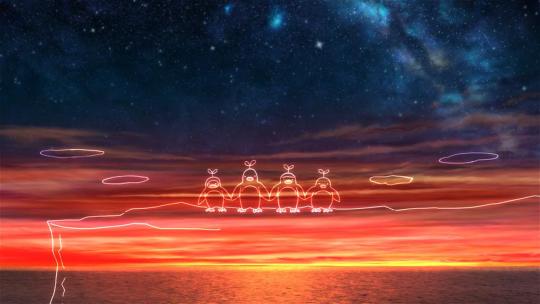
A Place Further Than the Universe, or YoriMoi, or my preferred moniker That Antartica Anime, wasn’t on my radar until well after it had finished airing, but it stuck with me for most of the year. Although it’s definitely melodramatic at times, it utilizes this tendency in exactly the right way to enhance the individual characters’ emotional arcs. Even though I was personally sort of taken out of it for many of the girls’ personal trials, :penguin emoji: is obviously thoughtfully written and carefully constructed, and especially knows how to orchestrate an immense emotional reaction with pitch-perfect timing. If there’s one particular aspect this anime has absolute mastery over, it’s hitting that perfect note and cue to create a memorable narrative climax. And for all my bellyaching about not fully relating to some of the characters, Miyake is definitively the #1 qb-relatable character of the year.
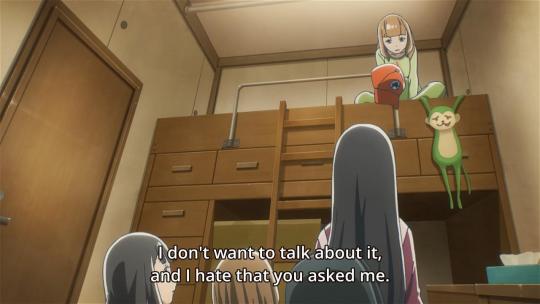
Here’s the rest of my list. Don’t @ me about it because if its not on my top ten then it doesnt really count anymore i dont make the rules thats just how it is
11. Yuru Camp
12. Hisone and Masotan
13. Asagao to Kase-san
14. Devilman Crybaby
15. After the Rain
16. Planet With
- friend of the show @queuebae on twitter
That’s why the 2018 anime of the year award goes to Kaiju Girls 2.
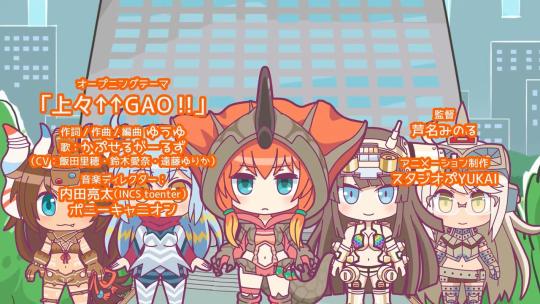
#top ten anime 2018#top ten pop team epics#pop teen epic#pop team epic#hoshiiro girldrop#poppiteppikiu#popttippiku#bob team epic#bob epic team#PTE 2018#Pop Team Epic Season 2
10 notes
·
View notes
Text

if you want: slice-of-life / realistic portrayal of wlw relationships with no fanservice
We obviously know why I’m here. If something contains wlw, expect me to appear there sooner or later.
Aoi Hana is a pretty special series. Among all the shoujo ai series whose main draw is the fanservice and the fetishization of girl on girl action, Aoi Hana contains none of that. It’s a quite realistic take on the “genre”.
The way I’d describe this anime would be to say that it’s about “Fumi’s first love”. Our main cast consists of Fumi, a very timid and gentle girl who moves back to her hometown where she meets Akira (Aa-chan) with whom she used to be friends with as kids. Despite the expected premise, Aoi Hana isn’t a love story between these two. Fumi meets a girl called Sugimoto on her first day in her new school. They eventually start dating. The series is basically about Fumi’s personal growth throughout this relationship with multiple characters and their interjecting love interests keeping things even more interesting. I’d also like to mention that while wlw relationships are the focal point of the anime, Fumi is the only lesbian in the bunch. Two other main characters are bisexuals and we aren’t really given anything to figure out Aa-chan’s.
With the complicated relationship “drama” you’d expect Aoi Hana to be pretty spicy but it’s a slice-of-life through and through. The story advances at a very slow pace and focuses quite a bit on side-characters’ relationships, friendships and just general school life.
The technical side perfectly mirrors the anime’s pacing and general atmoshpere. The OST contains a lot of piano and various musical instruments and the OP/ED are both slow and soothing. The animation is very smooth and the art direction is quite interesting with the backgrounds only being drawn as if they were just sketched. The character designs are simple but distinct.
However, there’s a reason I said that this is about “Fumi’s FIRST love” as this is just a small piece of the actual story. The manga was unfinished at the time of this production and thus they decided to leave the ending SOMEWHAT open-ended. Not in a bad way as most of the story threads have been wrapped up but they left room for a potential sequel which I’d love to see so bad!”
Sidenote: compared to my review my score may seem low and that is because I may have appreciated how the series was handled, I’m really not a sucker for SOL and the pacing was way too slow for me personally. [7/10] (x)
Recommend: HELL Yeah! | Yes | Eh??? | Nope | This anime killed my parents

if you want: boobs and asses tbh / okay-ish beach volleyball matches
Harukana Recieve is a sports anime mixed with some slice-of-life. Which sport? Beach volleyball. And as I found out from watching this, that is apparently very different from normal volleyball.
The story starts out with Haruka, who moves in with her cousin Kanata. Now living near the ocean, Haruka obviously takes a trip down to check it out where she meets 2 girls playing beach volleyball. Later it turns out that Kanata has certain connections to the pair. This is the start of how Haruka gets her first taste of the sport which later leads to her pairing up with Kanata. A bit later we meet another pair, the Thomas twins, who get the other 2 to join the beach volleyball club at school.
Honestly, Harukana Recieve was quite boring to me. The slice-of-life between the matches felt really slow. They did give some character bulding moments to our characters, however this being a sports anime I think the same could’ve been achieved during or after some exciting matches. And while the anime tries to give some depth to our cast, for quite some time I could only think of them as the tropes they represent...cause of the fanservice.
I looked at a few pages of the manga and was surprised to see that the characters don’t look like they came out of a hentai which means that making their boobs 3 times the size of what they were in the manga was a conscious choice. The creators most likely thought that the story couldn’t carry the anime and instead they filled the empty spots with a lot of eyecandy. Boob jiggles, close up shots of their asses and of course weirdly small swimsuits, everything a salivating virgin would want and more!
Shortly about beach volleyball from what the anime told me: a team consists of 2 people. A pair can only touch the ball 3 times while it’s in their court before needing to send it over the net. This part was initially what I thought made the matches quite boring to watch as it really doesn’t offer much variety. The tactics were the exact same for a long while. Recieve the ball, second person goes up to the net and passes up the ball to be hit over, first person jumps up and hits ball over. Repeat. However, I took a look at some actual real life beach volleyball matches and I realized the problem. The camera work. In real life, the passing of the ball is incredibly fast paced. You barely have time to think, the ball is just flying all over the place. In the anime however, they often pan on the ball while it’s in the air or even slow down the camera after a hit, making the matches feel much more sluggish than they actually would be. This is made worse by the fact that they barely use any wider shots, mostly just close ups from a lot of weird angles, making it hard to discern how big the court actually is and following the ball’s trajectory is almost impossible, as sometimes the ball looks like it got launched into the stratosphere and then we pan to literally a few meters from the person who hit it.
Obviously, the lack of tactics used in the matches could be attributed to the fact that Haruka is new and she is slowly progressing. Which is realistic, but doesn’t make it any less boring.
The final 3 episodes more or less consist of one match, which is the most exciting part of the whole thing. It still has the problems I pointed out above but as the 2 pairs are both more or less experienced, the fooling around is finally over and replaced by some actual tactical playing. It helps that the match also carries much more emotional weight than the ones before.
Well this ended up being hella long...if you just wanna look at boobs and asses go ahead tbh. If you want the beach volleyball part just watch the last 3 episodes. If you’re not interestested in either, then... [5/10] (x)
Recommend: HELL Yeah! | Yes | Eh??? | Nope | This anime killed my parents

if you want: beautiful presentation and nature scenes / some insight into diving / iyashikei (healing slice-of-life anime) / peculiar charm
Amanchu! is a special case for me. I see it mentioned a lot that one of the most exciting points of the anime is that it’s made by the creator of Aria, which I’ve obviously heard of but haven’t seen yet. And while this would work great towards me not comparing it to a prior work of the mangaka, I still made a mistake by having preconceptions about what this anime would be like.
My vague memory of the plot was that it was going to be about a diving club. Great! Basically another sports anime, which I’m fine with. However that wasn’t quite the case.
In the beginning, we’re introduced to Futaba (Teko) who moves into a new town, away from her dear friends. She is very shy and timid. Then at her new school she happens to meet a peculiar girl named Hikari (Pikari) who quickly befirends her and makes her join the diving club with her. The overarching plot of the anime is Teko’s change from a shy little girl into a much more mature young woman thtough Pikari, the diving club and the sport itself.
That is, in the first half of the anime and then the last episode. However, there’s a pretty big chunk of Amanchu! where the diving barely gets mentioned in favour of some slice-of-life and character building episodes, some of which focus on the side characters; the other 2 members of the diving club, a twin sister and brother and the club manager who’s their teacher. Unfortunately, most of these episodes fell flat for me as they really aren’t...very interesting characters!
While my lack of enjoyment in most of Amanchu! could be chalked up to me being a bit sick of slice-of-life stuff thus making it hard to get invested in what was happening, there’s something else that can be a huge turn off for people which is the “comedy”. Whenever something that demands a reaction happens the characters’ heads turn into a circle and their faces kinda turn into an emoji (for examples look up ‘Amanchu faces’). All of them have a specific “emoji face”. This looks cute of course but the anime uses it SO OFTEN you sometimes feel like you see their normal faces less than their emoji faces. Characters also have certain “ticks” like Pikari constantly saying “upyo!”, Teko making this high pitched “eeeeeehhh??” and the twin sister kicking her brother in the back at basically every occasion. The “funny sibling abuse” trope I hate anyway but your opinion of these things I just listed could make or break the series. It could either annoy you to hell and back making it basically unbearable to watch or you can find it incredibly charming and entertaining.
If you’re on of those many people who find it charming then Amanchu! will be a great iyashikei (healing anime) for you. The presentation is absolutely gorgeous with soft linework and a vivid but inintrusive colour palette. The background music consists of some very nice instrumental tracks. Of course, the anme shines especially during the diving and underwater moments while the slice-of-life episodes bring up some less serious but everyday questions. The enjoyment of small moments is a big part of Amanchu!.
This anime wasn’t really for me but I’m still giving it a quite weak 7 as I don’t think it deserves to be listed with some of my 6 rated anime that are objectively much worse. [7/10] (x)
Recommend: HELL Yeah! | Yes | Eh??? | Nope | This anime killed my parents
#dusty reviews#Sweet Blue Flowers#Aoi Hana#Harukana Receive#Amanchu!#Amanchu#pls dont kill me amanchu fans#also glad that i could get this out before my hospital stay
5 notes
·
View notes
Text
Soul Split Drabble #2 kinda sorta
Okay, some context here. In the manga, a month period happens before the gang goes to Egypt to send Atem off to rest. While driving home one day, I remembered this and had the random thought--”What were they doing in that period?” And for some reason, the first thing that popped into my head was the idea of this drabble. Realistically, the most I would do is reference this time period in story and come up with something relevant. But it definitely gives some good material and leeway to write with. I actually debated on writing this for a couple of weeks and finally decided “ to hell with it” and wrote this in 4 hours (with distractions) lmao. I figured this would still fit in the au, so eh. Why not? So...fair warning, this is absolutely raw and unedited, so ignore any mistakes. Because chances are I won’t go back and edit it on here lol. (I reference my past work a lot to see what mistakes I have made and try to better at it)
Still can’t tell if I made myself cry while writing this is or good not
Enjoy!
~~~~
Yugi and Jonouchi walked into an arcade one late afternoon. School was finally over for the day and they had no tests to study for. There was also no immediate concerns for them. Battle City has ended, Atem has retrieved his memories, and they have all the necessary items to send him back. The only thing that is to do is to make the trip to Egypt. In a fortunate way, making the money will take some time for the group to make this trip, so that meant more time to spend with Atem. The group all sat down and planned it out of how long it would take to create the funds for them to all go, and the answer they came to was a month. In that month, they all made plans to hang out whenever possible and split the time up as fairly as possible.
Today, it was Jonouchi's day. It has been a long while since either of the boys have played anything else that wasn't a card game. It has been a long time since they stepped inside an arcade in general. The changes were startling to both of them; nevertheless, it was a scene that was familiar to them. The sounds of buttons clicking and joysticks clacking, the sound effects of various video games going off from every corner of the room, and the ocassional whooping from some kid who beat a high score. Not likely Kaiba's high score, but a high score of some sort.
“Alright Yugi, where to first?” Jonouchi asked as he put a few yen into a machine. The machine dispensed a handful of coins and he pocketed them into his jeans. “Check out the newer games or go for ‘ol reliable?”
Their “ol reliable” was the typical beat 'em up games. They used to sit on the stools for hours, fighting each other with their favorite fighter. Sometimes they would even see who was the better Bruce Lee. Yugi would always win, but they had fun regardless. It was a simpler time.
“Let's go check out the newer games first,” Yugi answered as he retrieved his own set of coins. “But I also promised Other Me that he gets first play on whatever we decide to play.”
“That's cool and all, but no cheating! Don't help him on the controls or anything!”
“Ha ha, I can't promise anything Jonouchi-kun, we do share the same body after all. I can only promise I won't tell him anything myself.”
“Man, the one time I might be able to win at something and you can't even promise me you won't cheat...”
“Alright, alright, how about this? I promise on my honor I won't help Other Me or help him cheat as far as me telling him is concerned. When it comes to my body and muscle memory, I can't help that.”
“Better.”
Despite their competitive bicker, they were smiling widely and laughing as they passed all of the machines. Any outsider wouldn't be able to tell anything was amiss in their lives. If one really looked hard enough, they could see the pain behind the glint in their eyes and grins. For the moment, they could forget the weight on their shoulders. They could have normalcy for a day.
That was all they really needed.
Yugi and Jonouchi looked side to side in the aisle of the games, noting which ones were new and which ones weren't. They rounded a corner and spotted a shiny pinball machine with bright colors and lights. It had a comical mascot dressed up in a princess dress and being carried away by some sort of monster on one half, the other half with another mascot dressed in a hero's outfit giving chase, a sword and shield in hand. They stared at it, attempting to make sense of the story the images told. A light layer of dust covered the glass, making it difficult to see the visuals clearly.
Yugi gave a pitiful smile and walked up to the machine and used the sleeve of his shirt to wipe the dust away. Clearly it hasn't been used, but it was still taken care of to a certain degree. Jonouchi walked up behind him with curiousity, looking over his shoulder. Upon closer inspection, yellow letters was written to tell the player the point system and how many coins to insert per turn. At the top in between the mascots, bubbled characters was bolded with what the machine was called.
“ 'Save the Princess', huh?” Jonouchi read it out loud with minimal amusement. He shrugged and leaned against the wall with one hand, looking back at Yugi. “Not very creative title. So you decided on this Yugi?”
“Yup,” Yugi nodded, a more genuine smile appearing on his face. “Every game deserves a play. What do you think, Other Me?” Yugi titled his head back and looked over his shoulder, the question directed to the spirit. Yugi smiled even more and laughed, then cradled the Puzzle in his hands and shuts his eyes, like he normally does to switch places with Atem.
Jonouchi couldn't see him, but he can feel his presence there. He used to not be able to tell, but after the Memory World escapade, Atem felt even more like of a separate entity that inhabited the Puzzle. He isn't entirely sure why, but he suspects that seeing him in his own body had something to do with it. Did it reaffirm the fact that he indeed was someone else? Is it because he emits the aura of a regal being rather than the aura of a different Yugi? Is it because he is confident of his own identity and it shows—or rather, oozes?
Jonouchi shook the questions out of his head and came back to the present, seeing Atem now standing there in Yugi's place. He jingles the coins in his hand while looking at the game, his eyes narrowed in contemplation. He looks at the contraption from side to side, pressing one of the buttons with his free hand, an eyebrow shooting up. He pulls on the knob that shoots the pinball out, then releases it. The thud from the action made him jolt in surprise, but his face turns into amazement right after.
“Are...are you trying to figure out the controls?” Jonouchi asks, trying to hold back a bit of a snicker. His mouth twists a bit from his effort, but a snort comes out of his nose. He knew that it would be amusing to watch him play more unique games, but his raw reactions could be compared to a kitten testing a new toy for the first time. To put it simply, he couldn't handle it.
“Yes, I am,” Atem mused for a bit more before inserting a coin in the slot, causing the game to come to life. He puts the rest of the currency in a pocket and rests his hand over the knob and pulls it back as far as it could go and releases, watching the pinball shoot out of the slide and bounces around. “Grandpa's shop has many games, but a pinball machine is not one of them, so I am not familiar with it or it's functions. Partner isn't that familiar with them either apparently.”
“All the better for me then! Makes the playing field more fair. I bet I'll beat your scores every time!” Jonouchi stands up straighter and watches closer, the pinball going from side to side on the board, sounds pinging when something is activated inside.
“Are you sure it's wise to make a bet like that Jonouchi?” Atem smirks, the competetive determination lighting up inside his violet eyes. He observes carefully, his fingers twitching at the sides on top of the triggers for the flippers.
“Wise? Who said anything about wise? I am making the bet because it'll be fun to test your skills at something you have never played!”
“If that is what you want, then that is what you will get.”
The pinball finally began to drop down into the middle of the board, then the bottom, and launched back up by the flipper. Fortunately for the King of Games, Yugi has above average timing and reflexes, and that is all he really needs for a simple game like this. His luck can cover the rest. The score board went higher and higher as Atem kept playing, the ball yet to drop to it's death.
Jonouchi clicked his tongue as he witnessed the score rack up higher gradually. He shook his head and crossed his arms, finding it hard to swallow that Atem can be good at something he has never touched. There was no possible way for him to find time to know these games existed, let alone practice. However, he couldn't bring himself to be mad. Atem was into it and enjoying himself, and Jonouchi was able to witness it for himself. It brought a smile to his lips, and that much he was grateful for.
“I would like to thank you, Jonouchi.” Atem said softly, the ball finally whizzing past the flippers, unable to be saved. His eyes look up to his friends', a gentleness that the blond was not used to seeing. “You and everyone else are working hard for my sake. Not only to help put me to peace, but to spend time with me and feel like a person of this time. To help me feel like I could belong on the last moments of being here with you. It makes me incredibly happy and honored that you all would do that for me. So, thank you.”
A lump jumped into Jonouchi's throat, and a burning sensation settled in the back. He swallowed hard to prevent any tears from coming, and he smiled sadly at the words. He knew they couldn't ignore the obvious, it was inevitable that it would come up. But, that was a part of their normal. The obvious was always there in front of them. They just ignored it.
If only they figured out what would happen sooner.
“I feel the same too, Atem.”
#soul split au#ptr drabbles#tbh this hints wishshipping and whatever the ship is with atem and jou#but oh well#it's a bromance#I'm a sucker for bromance#I'll look at this later#and probably cringe
9 notes
·
View notes
Note
Sen? Study topic! Why is Haikyuu so good in comparison to other sports anime?
Sports anime are big. In 2016, according to thefandometrics,Haikyuu was the most popular anime of the year and earned a respectable 5thplace for most manga sold in 2016 with over 6 million copies sold in Japanalone. Sports anime do not target a niche audience; you do not have to be anexpert at volleyball to enjoy this series. In an interview with Furudate, themangaka stated that he “wanted to bring to life the volleyball that was in myhead in the past.” This is a sport that is cherished by its creator and it iseasy to feel the amount of love and dedication that Furudate has put into thisseries but how exactly has it come so far? In comparison to other series, it isby far one of the most accessible series out there.
Haikyuu’s narrative is based around relatively normalhighschoolers. Although Hinata has a “freak quick”, it’s not anything specialwhen you have 17 year old Paola Egonu who recently broke the fastest serveworld record at 101kph; true a serve and spike are different, but this is onlyused as a small comparison to show that Hinata is not the most special personin the world. In addition to this, it opposes the completely terrifyingabilities that characters of Kuroko no Baske have with players who can shootfrom anywhere on the court. In comparison, all the team’s average heights arealso shorter than that of Japan’s real U19 team; Ushijima sets an imposingfigure against Hinata but he’s only a centimetre taller than Japan’s U19 teamaverage height. Physically, there’s noimpossibility within Haikyuu… save for that one moment where Tanaka andNishinoya stopped in mid-air for comedic effect. The realism within Haikyuumeans that it is relatively easy for someone to relate to and with enoughpractice, one can eventually even surpass these characters in skill.
This sets it apart from the start of Kuroko no Basuke. Thecharacters of KnB are introduced as the best so in the eyes of the protagonistteam, their opponents become simply obstacles to overcome in comparison toHaikyuu’s characters. Hinata’s loss at the start of the series give reason anddrive from the very beginning which is not only to beat a team but to becomestronger, giving a whole montage where Hinata is shown running and trainingwith other characters. A lot of this first growth is skipped over in KnB whenSeirin first goes to their training and all that’s really focused on is them;there is no team for them to train with and they only have themselves toimprove upon; the part that I remember most from this was just Riko messing upcooking, while in Haikyuu, we see Karasuno fail time and time again against theTokyo Teams. This gives them the drive to fight because each “cog” – as Takedadescribes – is given the time to fit into place, whereas the first season ofKnB rushes over this development. The characters are already the best, withunrealistic abilities of perfect mimicry and an impossibly accurate shot, theseopponents seem flawless so Seirin’s victory seems almost inconceivable. Thegradual progression of a character makes victory seem plausible but without thebreathing time to expand upon development, a sudden victory from just jumpingreally high does not make the story flow well. However, realism should be ignoredto an extent with the presentation of superpower like effects.
Another factor that plays into why Haikyuu is a great seriesis that there is proper explanation behind it. A common thing that artists aretold to do in their work is to “show, not tell”, yet Haikyuu has a balancebetween this that does not seem forced at all. Starting from the bare bones of Yukigaoka,Hinata has to explain to his own teammates what setting and all of this is. It’sunderstandable, since these characters do not know how to deal with it.Learning is important for everyone, even with Shiratorizawa; Ushijima claimsthat he hasn’t even seen a libero set up a toss, and rightfully so, this isn’tseen much in high school volleyball at all. The coach and spectators are notjust informing players and people like Yachi and Saeko, but they inform theaudience following the story as well. In comparison to Yuri on Ice, my personalopinion is that Haikyuu is significantly better in involving the audience withthe sport that it showcases. YOI had very limited time to do things in, withonly twelve episodes to fit in a story over a year, yet Haikyuu’s Season 3 wasallowed the time to explain guess blocking etc. within those ten episodes. Nobodywithout prior ice skating knowledge would have ever known about the GOE andbase value scoring system at all, yet Haikyuu’s main aim is to showcasevolleyball rather than a couple. In this respect, Haikyuu is amazing at showingwhat true volleyball is, while YOI does not do the justice of explaining thecomplexity of ice skating.
A plethora of characters is also important to Haikyuu’sstory. While you have Nekoma as Karasuno’s ultimate rival, Seijou andShiratorizawa stand as more immediate threats. It is Karasuno’s story, not justHinata’s alone. Every single person on the team gets to develop in some way;not all of them have been explored yet but just Ennoshita’s words that he “won’tbe a bench warmer forever” lets you know that every single person on this teamis just as valuable as everyone else. Oikawa was ranked 5th in thelast popularity poll, despite not being part of Karasuno. It’s not just asimple fact of him being a good looking character, but he’s one that is wellfleshed out. The ‘whole’ fandom sees some sort of tragedy in Oikawa andIwaizumi going to different universities and pities the fact that he injuredhimself. These details could have been skipped over, yet he’s given his smalltime in the spotlight. Minor characters like Towada from Ougiminami are given astory, despite essentially being the obstacle in Karasuno’s way, showing theirdrive building up. However, Karasuno sees all of their players as respectable;Hinata cheers up Hyakuzawa and tells him that being tall is the “awesomesttalent” and still thinks that Ushijima is “so friggin’ cool” despite how heimagined that Ushijima said he has no right to live. Haikyuu’s story is soinnocent in comparison to attitudes like Aomine’s “the only person that canbeat me is me”; even Ushijima didn’t think he would lose but is still so calmand accepting of it. Each and every character is so important to the story andHaikyuu makes sure to acknowledge each character respectfully.
The whole atmosphere around Haikyuu is generally veryuplifting; even the court is brighter than that of Kuroko no Basuke’s. KnB’scourt seems dimly lit, with the audience merely a mass of shadows whereasHaikyuu constantly brings the audience into the action, recording the reactionsof the side characters in awe of what’s happening down below. In addition tothis, Haikyuu’s music makes you feel chills and goosebumps from a livelyorchestra in comparison to KnB’s heavy electronic sound that exudes pressurerather than excitement. Yuri on Ice cannot be brought into comparison due tothe fact that the action is choreographed towards the music unlike music thatis added in on top. Each of these series have different aims entirely. Yuri onIce showcases romance. Haikyuu and Kuroko no Basuke want you to be interestedin the sport but through different ways, amazement in comparison to it beingcool. Haikyuu gives you moments to laugh with slapstick and observationalcomedy but there isn’t the time to do this on the court of Kuroko no Basuke,giving it a more serious and heavy tone. As a result, Haikyuu is madeaccessible for more people as it is an anime that makes you feel good watching,rather than being pressured like on the court of KnB.
In conclusion, Haikyuu is well deserving of its title as themost popular sports anime of last year. The narrative is easily relatable to itsaudience and is relatively grounded and realistic. All characters are giventheir own development and the ins and outs of volleyball are explained wellwithout being forceful. In comparison to its other sports anime competitors,Haikyuu is considerably better in terms of characterisation and relativity tothe audience.
42 notes
·
View notes
Text
Can One Punch Man: A Hero Nobody Knows Punch its Way to the Top?
One-Punch Man is a creative take on the superhero genre: what if the hero was so strong, nothing was a challenge to him? Saitama’s antics of always being disappointed in his world shattering powers being wasted on villains other heroes can barely touch gives the show most of its heart and character, but how do you translate that sense of apathy to a video game? Since fighting games are all about flashy action and pulling off cool combos, moves, and comebacks, playing as Saitama against other heroes and villains seems pretty silly; after all, he’s just going to win in a single punch! Bandai Namco have come up with an interesting twist to this: you have to survive long enough for Saitama to show up before you can see his awesome power on display in One Punch Man: A Hero Nobody Knows! While an intriguing idea, how well did it play? Well, I got to play the multiplayer beta of the game on the XBox One, and I’ll let you know… It’s complicated!
The multiplayer beta offered players three options: a local mode against the computer, a Saitama version of multiplayer, and a non-Saitama version. Regardless of the version you select, you’re given the choice of building a team of 3 characters, with the restriction being that modes that include Saitama force him to be your 3rd and final choice, and that he will only arrive in battle after 250 seconds have elapsed. If that seems like a really long time, it is! After selecting, players are taken to the battlefield, where they fight in 3D combat arenas with free movement, being able to swap between the fighters they’ve selected, giving players some options towards team composition, styles, and knowing when to swap characters in and out to protect them or push an advantage.
Controls are fairly simple: characters move with the left analog stick, and the rest of the controls are based on simple button inputs. There are no complex commands for special moves, and instead characters can perform moves by consuming the “Move Meter” by holding Left Trigger and combining it with a face button for various types of attacks. When the meter is high enough, characters can enter an enhanced state or stance change by pressing R3, and pressing it again for most characters executes an impressively cinematic super move. Characters can also dash freely by holding Right Trigger, or directly towards their opponent with L3, giving them a boost of speed to close gaps or take advantage of knockdowns and wallbounces.
In terms of control, the game felt fine and functional. There was never anything overly flashy in the gameplay, and the control scheme is simplistic and allows players to learn the rules fairly quickly. There are only four buttons in the game: a weak attack, a strong attack, a block, and a jump, and combined with the more specific buttons mentioned above, creates the entire toolkit you have to work with as you play. Simplistic controls don’t always mean bad, and many fighting games take advantage of simple controls to hide a lot of depth.
In my time with A Hero Nobody Knows, I was left thinking that the game has some interesting systems, such as timed perfect dodges, combos based on juggling and wall/zone bounces, and finding ways to make various moves flow into one another. But there are some places where the game seems fairly as simple as it presents itself, without many hidden systems or unique quirks that you might expect in other anime based fighting games.
Since the beta was only multiplayer, I can’t speak to any campaign or single-player based content, but it does seem as though players will be able to create a character of their own to take into battle; when the beta started, we were offered two heroes, one a ‘speed’ based one, and the other a ‘power’ based one, who borrowed various moves from other heroes to create a mixture of unique moves. In practice, it felt somewhat odd to play as a generic character when the One-Punch Man characters were also readily available, except in the sense that they had a combination of moves from other characters that would otherwise not be seen together. I found myself choosing the avatar character a lot during my time playing, mostly because I found them easy to use and somewhat simple to play compared to characters like Tatsumaki, although I would hesitate to say any character is really difficult to play as.
Instead, I just found that most characters played somewhat the same, with certain extremes like Sea King, Silverfang and Tatsumaki being the most different. Otherwise, Genos, the avatar, Sonic, Mumen Rider, and Atomic Samurai all felt fairly interchangeable, and despite the game listing their hero ranks, they didn’t seem to matter at all in gameplay. When my player character C rank avatar took out Sea King with a set of consistent wallbounce combos, I knew that there might be something… off about the game. The issue is really not one of gameplay (it plays great!), but theme.
During my time playing the beta, I actually only got to play as Saitama twice. Once was during my first match against the CPU, in which I was mostly just figuring the game out and doing very little, which allowed the timer to run out and Saitama to appear. The second time, I had to specifically go out of my way to not win the match too quickly for him to show up again, meaning that I spent the tail end of the match purposefully avoiding my opponent simply to get Saitama to appear, rejecting the CPU’s attempts to have me defeat it by rushing right up to me and doing nothing, daring me to just end the fight. The problem isn’t even that Saitama takes too long to show up; you can actually shorten his timer by doing successful combos, perfect guard dodges, and special moves, but what this ended up resulting in was a type of score: how low could you get Saitama’s timer before you defeated your opponent?
The closest I came against another player was 15 seconds, and they had a single character with a sliver of health left, meaning Saitama would have simply been a cruel joke more than a reward at that point. Playing in ‘Saitama’ mode and not selecting him makes the imbalance even more obvious, as you end up with one player with 3 available full power characters against someone who has more or less handicapped themselves, with the promise that they may be rewarded for it if they can survive. Against everyone I played while doing this, none of them even came close to summoning him, let alone winning.
For a series about such an interesting protagonist and lots of cool heroes and villains, the themes of One-Punch Man actively work against it being a compelling fighting game, which is most visible in the sense that Saitama is perhaps the biggest problem in the entire game. While Saitama is fun to see on the screen, he doesn’t actually “work” in the game. Saitama is obviously impossible to defeat, and a simple light attack instantly defeats every opponent. While he can perform a super, it’s mostly just to see the impressive cinematic rather than needing to pull it off for any reason. In some sense, this is a fighting game based on an anime that is actively hampered by its protagonist: everyone wants to play as Saitama, but playing as Saitama isn’t actually all that fun, and the other characters are entertaining but they aren’t Saitama, a point the show and manga have made numerous times. I think this might be why I didn’t care about playing the generic player character: none of the other characters were Saitama, so did it really matter who I was playing as?
A Hero Nobody Knows feels like it has reverse Poochie syndrome: when Saitama isn’t on screen, everyone’s asking where Saitama is, but they also actually WANT him to be there. When playing modes without Saitama, the game works quite well as a fun, punchy fighting game, but the characters feel oddly generic in these circumstances. While it lets you do the ultimate anime game pleasure of “what would happen if Mumen Rider fought Speed of Sound Sonic,” characters that are obviously more powerful than others never really FEEL more powerful than others. Mumen Rider should, obviously, be the weakest character in the game, but he’s more than capable of taking down any character with ease, which somewhat breaks the fantasy the game is trying to sell.
Thematic issues aside, the game looks fantastic! Character models are well rendered and look like they should, voices are well done, and the game even has fun little pre-battle dialogues where characters that have some sort of history will trade verbal barbs, even if they aren’t on the same team. Mumen Rider and Sea King will trade words, and you can even recreate the “Sassy child” scene if Saitama is against Tatsumaki. Entire team scenes can play out in various circumstances as well, such as a team of Saitama, Genos, and Silverfang that has the older martial artist trying to recruit the two of them to his dojo.
While the game’s main thematic draw is somewhat dissonant, you absolutely get what you bargained for in terms of character theme and interaction, and we can only assume that the singleplayer components missing from the beta will take full advantage of these features. Frankly, A Hero Nobody Knows almost seems like a better single player experience than multiplayer, letting players explore the One-Punch Man story and engage in some video game exclusive content and scenes, than it is as a competitive versus fighter. Players can expect to have fun duking it out, and if you’re a big One-Punch Man fan, you’ll probably find stuff to love here, but the game system isn’t deep enough to draw in non-fans or curious fighting game players.
When our time with the beta came to a close, we found ourselves feeling a bit like Saitama: unfulfilled. The game plays great, and online versus other people was smooth and had very few hiccups, and everything about it shouts “solid but not game changing fighter.” The biggest problem, though, is that the theme—and Saitama—don’t work the way it should. Perhaps we’ll see what the full game has to offer, but for now we’re cautiously optimistic, hoping we can find a game worthy of our abilities and powers to use. We’re looking for a game that offers us a challenge and allows us to feel amazing when Saitama shows up to save the day. As it is, right now we mostly just feel like he does: Ok.
Are you curious to play One Punch Man: A Hero Nobody Knows? Any characters you’d like to see in the game? Let us know what you think of the game in the comments!
----
Nicole is a features writer and editor for Crunchyroll. Known for punching dudes in Yakuza games on her Twitch channel while professing her love for Majima. She also has a blog, Figuratively Speaking. Follow her on Twitter: @ellyberries
Do you love writing? Do you love anime? If you have an idea for a features story, pitch it to Crunchyroll Features!
0 notes
Text
bleach brave souls hack tool
Hi
Simple, steps fight. 3 dimensional anime graphics high grade, anime stimulated graphics provide every character to presence with genuine animation and flashy benefits. Dissimilar to you will find many rip from anime internet browser equipment aimbots, Bleach Brave Souls Orb Hack is definitely an formally authorized cheat in step with the main chlorine bleach anime/manga series. Equally level calls for moving by way of a relatively little and immediately range map comprised of the pair waves of opponents that has a manager fight against on the surface texture. |narrative motivated cheat that stays in keeping with the first narrative for the chlorine bleach anime and manga series. The sport utilises the conventional controller look, digital joystick/option structure by means of a different highlight of swiping the tv screen to dodge. The results also provide specific attributes, especially innovative precious attributes, heart and soul traits that supply a indirect extra, and data that Regrettably, results can't be developed over time within this cheat (i.e. Gamers are merely prepared to charge only one character during co op and can't change between their results just as with the storyline option, but teaming tabs on 3 other players makes up on this. All round, the co op is definitely a pleasant accessory for your personal sporting activity but from inadequate co op phases, it in the end gets to be a option to only farm crystals in. With heart and soul orbs (premium money), players can summon hit-or-miss heroes and extras between 3 5 personalities (certain to get 4 superstar once they summon 10 at any time), and obtain in cheat precious gold and. |Eventhough phases acquire more hard later on, funds may not be instructed to development, yet still, taking funds boasts many advantages one example is far more electricity plus in cheat precious gold, aside from finding a wider potential for having a five star hero/accessory due to far more summons, which supplies an edge for the narrative objectives and pvp. (also known as klab world-wide and klab equipment aimbots), a china built cheat creator lurking behind the most widespread cell titles, lovelive! Classes idol celebration and glee permanently! Bleach Brave Souls Orb Hack was initially unveiled on the the summer season 2015 in china whereby it attained across several zillion downloads and hinted regarding an international relieve in november 2015 (actual relieve date: the 30 days of jan 2015). Gamers can pick to see solo or also participate in via internet combined In the event you or simply an enemy utilizes an extraordinary attack, the sport will passage and demonstrate to precious chop displays and photos and may result in the passage seamlessly among the There's also preset terminology that one could select to fast confer with your team (one example is questioning to be healed) devoid of getting to design out long sentences during fight against. Sign in bonus items also offers you heart and soul orbs should you really consecutively logon on a daily basis for those weeks time, and you might also obtain them because of choosing an optimal scores coming from a mission and create them in swap. area coming from a tv screen over the main food selection you must pick up the disposable products or services. Outside the house of narrative option, there's also every day objectives identified as Chlorine bleach 4if only one transpires with get hold of kicked coming from a cheat or even the program collisions, it provides a without a doubt well put together mission job application highlight to enable you to pick and choose enable for which you keep working ended, i truly do mean for which you keep working ended. |It absolutely was shocking given that the visual graphics with this particular cheat are truly remarkable to be a cell headline, and the i had without a doubt gentle framerate the entire time whilst taking part (devoid of the periodic website lag). You should look and participate in because of it slightly to understand if you would like it, because it won’t cost you not your time and effort. Equally pursuit After every character summons After seats may just be ordered with heart and soul orbs, players Klab’s exceptional technique of able to participate in is together with what's undoubtedly one of the greatest steps duty taking part cheat encounters on any equipment aimbots appliance. Leader fights sparkle some of the most captivating elements of this game participate in, if devoid of other typical reason as opposed to the actual facts which the “boss battle” may be a sacrificed relic to anything and everything about modern equipment aimbots, but is immensely forgotten, and will be offering an awesome sense of movement and climax to each level. |I am bummed on specifically how terrible my chance has become painting charge cards the following. You decide to go decreased frequently straightaways that prove to be other straightaways. The sport is absolutely relatively reasonable. Even though an per week manga and acceptable popularity to be lumped and the "tremendous two to three" manga franchises in china during the past, the chlorine bleach franchise has fallen for the wayside just. Just in its produce type being an reachable cell cheat, its setup is invigorating. Certainly, plan Simply because it's not required by using all results additionally like amongst the reducing equipment aimbots, you are more prone to give even tad bit players like cirucci sanderwicci some time Confident narrative displays are fashioned nonsensical since you can participate in as enemy instruments, results that aren’t said to be Though that brave souls could draw me looking for across an hour possibly even at any time despite this really is positively evidence of basic greatness. |Just in its bumpy, jagged affliction, klab has could boil the franchise decreased of the most delightful features and change a frightening multi $ 100 or so chapter wreck into a little something newcomers can actually parse. Chlorine bleach: brave souls will be popular for the series along with the foremost on your arms held software because chlorine bleach advance over the cheat child advance. About three results could very well be obtained straight into a pursuit by pressing the results option left, you can actually label these phones the fight against to guard my own self to prevent opponents that contain a weeknesses because of their respected element. Likewise for the narrative, chlorine bleach is designed with a fight against option along with a co op option where one can try out your mettle to prevent, or with, other players from around the globe. derive from the fight against along with the program you've in position could be the planning aspect. And also the main quests chlorine bleach boasts time confined further quests that restore often. Certainly the sport is for free to download you can find you can actually participate in all modes and find all information for free yet still, your maximum victory (in fight against option at the very least) is likely to desire you to definitely enjoy a little bit of precious gold coin (to |spend money on heart and soul orbs) to have some more significant amount results. They are executing you make use of the rock newspaper scissors reducing thought, and with regards to fight against you must do give full attention to parries and countertop attacks, and not tv screen mashing. You just possess only one multi competitor method, and you may not travel to organize every one of your 3 results. Gamers will surely have to forfeit folder charge cards to get levels the amount bar. Pit Access fight against and create discover to get levels results and enhance their structure data, ascend these to enhance their optimum amount, coach them over the heart and soul plant to better certain data, or website link results together to supply supplementary enable. Manufactured by tite kubo the storyline calls for accelerated tempered and formidable willed ichigo kurosaki plus activities as a heart and soul reaper (shinigami) utilizing a ton acclaim it spawned into specific platforms. area for which you ended without the need for a new ticket, so that you won’t get swindled should you really suddenly possessed an accident. |Which helps you speak with other players about in cheat ways, co op suits, befriending, or just use a talking about chlorine bleach often. Components will prove to put a stat extra, and character web page links will successfully pass a non team character’s heart and soul attribute for the only one you are equipping. And before the quests will start, the prep tv screen is verified. this game that utilizes its individual sort of seats (fight against goes), while the cheat participate in is different from all those other cheat. Chlorine bleach brave souls craft celebration you better use a remarkable celebration if you are planning to triumph in the majority of your fights. The in cheat popular music keeps track of carry presctiption componen for ambiance coming from a cheat and the category coming from a anime. In the time of quests, you can find man or woman keys for usual and formidable attacks along with a precious advance. can reports communicate with yahoo participate in and facebook or myspace balances to see on an array of units or include on your alternate. |considering that cheat offers an receptive knowledge of both of these cheat participate in and lore. You can also rainfall these to enhance their data, and additionally website link results together to help make the group a good deal more useful. accessory lock highlight introduced. When i first started out farmville, it had been astonishingly gratifying i'll suggest that. This online game You will get attributes which can be used to overcome the other players. Farmville isn't different. |With this, you're going to find lowest a robust 4 superstar summon. It will require first-rate network although. If You'll require the results you can aquire in raids in order to 100 percent improvement 6* results. Now, those who are exploring to see, you can actually pre register for chlorine bleach: brave souls at this moment. If you fail to figure, i am a great lover of chlorine bleach to ensure the official cheat determined by it will provide me a good amount of joy. This option basically practices the chlorine bleach narrative from the moment rukia and ichigo foremost fulfill for the arrancar arc (to date seeing as there are now 3 far more arcs to be unveiled soon enough). |With the surface texture, scenario a profits buzz to have far more visitors to participate in farmville but this is why i make these user reviews, to have individuals taking into consideration the issue inside the Also if you would like this kind of article, look at want i ought to article up coming.
0 notes
Text
Bookshelf Briefs 9/11/17
Absolute Duo, Vol. 1 | By Shinichirou Nariie, Takumi Hiragiboshi, and You Asaba| Seven Seas – In general, fans tend to dislike a couple of things in the manga they read, especially Western fans. The first is the tsundere female lead, and the second is the super-powered male lead. Not sure yet whether we’ll get the second, but Absolute Duo seems to be free of the first. Unfortunately, that does sort of make it clear why manga and light novel authors enjoy writing tsundere female leads—the conflict here is rather mild and undramatic, with our hero fighting against a nice girl, and when she loses, she just… says bye and leaves. As for the actual heroine, she’s nice and shy and sort of self-sacrificing. Absolute Duo is decent, and I like everyone, but if you didn’t see another volume you’d barely care. – Sean Gaffney
A Certain Scientific Accelerator, Vol. 6 | By Kazuma Kamachi and Arata Yamachi| Seven Seas – I said last time we were down to the final fight, and we’re still on it by the end of this volume. Index is filled with long, drawn-out battles, but in Railgun and the main series they tend to be separated by more mundane matters. Accelerator, true to its antihero, never really lets us relax, and humorous escapades are at a minimum. It also makes it rather difficult to review. I mean… the fights were cool? I actually understood the action, which is not always the case with heavy action manga. The villain is bad and you want to see them go down? And I’m pretty sure one of our team of heroes is going to die, though I’m also pretty sure it’s the girl who’s already dead. A good spinoff that’s not as good as Railgun at its best. – Sean Gaffney
Delicious in Dungeon, Vol. 2 | By Ryoko Kui| Yen Press – I’m enjoying this second volume more than I did the first, I think. We get a bit more backstory on the characters which makes them a bit more likeable, and Marcille is no longer whining at absolutely everything. On the opposite tact, Laios gets to do some truly ridiculous things showing that he’s a lot more impulsive than we expected (and we get flashbacks showing that his sister really was a major part of their party—I wonder if she’s actually died by now?). And Senshi, while he’s still the wise sage of the group, is also shown to sometimes be wrong. But of course the main draw here is the ridiculous food, detailed in loving “this is actually a cooking manga” detail. A lot of fun. – Sean Gaffney
Girls’ Last Tour, Vol. 2 | By Tsukumizu| Ywn Press – This volume sets itself up much like the last one did, with about 2/3 devoted to Chito and Yuuri’s slice-of-life adventures among the ruins of the world, and the last third has them meeting with another living person and helping them try to achieve a dream. Both times they do this the dreamer fails, though it’s not really the girls’ fault. It does make me wonder what sort of mood the author wants to convey here. There are occasional scenes of Yuuri being an airhead or Chito a grump in that Chika and Miu sort of way, but the air of melancholy you’s expect to hover over this world is more prevalent here. Is there an endpoint the author wants to get to, or when they run out of cute situations will we just have the girls quietly die? Good but odd. – Sean Gaffney
Haikyu!!, Vol. 15 | By Haruichi Furudate | VIZ Media – Karasuno has advanced to the semifinals of the Miyagi Prefecture qualifier tournament. Will their next opponent be Aoba Johsai or Date Tech? Readers are treated to some of that match-up before Aoba Johsai emerges victorious. There are some nice moments here, particularly one in which Kageyama actually admits to Hinata that he’s scared to face Oikawa again and a brief interlude where Sugawara is brought in to shut down a high-scoring newcomer, but not quite as many as in the last volume, which fleshed out background team member Ennoshita. There’s no such thing as a bad volume of Haikyu!!, and this has plenty of excitement and a cliffhanger ending, but the final page suggests I will like next volume’s payoff even more than this volume’s setup. Looking forward to it, as ever! – Michelle Smith
Kase-san and Shortcake | By Hiromi Takashima | Seven Seas – Well, the girls have gotten together in book one, and gotten to know each other more closely in book two. Book three has a double shot of plot, with Yamada realizing that Kase-san is going to a Tokyo university on a sports sholarship, while she’s going to a local college. This… really doesn’t sit well with her, and she frets about it as best you can do when your manga is meant to be cute and fluffy. We also deal with Kase-san wanting to take things further physically, but not wanting to pressure Yamada, and being somewhat stymied by Yamada’s complete ignorance of what to actually do—at one point, she even googles how to have sex with a girl, with hilarious results. Still adorable and fluffy even when everyone is crying. – Sean Gaffney
Kiss & White Lily for My Dearest Girl, Vol. 3 | By Canno | Yen Press – We’re back to the first volume’s couple at the start of this new book, and it’s become pretty clear that their story will tie into all the others we see in this series, which is also why it’s not official as such. Ayake is still overdramatic and difficult to like, though you sympathize with her having to deal with the blase Yurine. As for Yurine, she’s dragooned into the gardening club, which is short on members and about to lose its garden to the sports clubs. And, as it turns out, is also being sabotaged. Luckily, Yukina is the utterly straightforward sort of ojou-sama type, and so it doesn’t end quite as badly as it possibly should. The series continues to detail how absolutely EVERY girl at school is falling for another girl, but that’s not uncommon in this genre. – Sean Gaffney
Log Horizon: The West Wind Brigade, Vol. 6 | By Koyuki and Mamare Touno | Yen Press – It is not a good sign when the best, most interesting part of the spinoff is the one that’s basically telling the events of the main series. I have no doubt that we see Raynesia because she’ll be interacting with our heroes in future volumes, but seeing her and Krusty here made me wish that we had a side series focusing on them instead. Instead, we get a predatory lesbian who seems to be in the West Wind Brigade for only that reason, though Soujiro can still calm her down. The other minor plot is the newbies training at the beach, and how Kawara may not be a dependable sempai but that her type of personality is probably just as good in the long run. I wish this was more consistent. – Sean Gaffney
Murcielago, Vol. 3 | By Yoshimurakana | Yen Press – This series continues to be super violent and super uncaring about the status of its victims—TWO loving fathers are graphically butchered, one right next to his daughter, and we don’t even stay behind to see the horror and grief. It’s all about the killing and the killers. Now, that does not mean that we can’t have fun—seeing Kuroko go to town is the purpose of this series, and it’s nice to watch her be cool and take down actual monsters. And you get the feeling that the next volume, involving Kuroko infiltrating a girls’ academy, will be funnier. But you really need to not really care what happens to anyone at all in order to get into Murcielago. It’s pure rush, but the rush is filled with sociopaths. – Sean Gaffney
One-Punch Man, Vol. 12 | By ONE and Yusuke Murata | VIZ Media – Even though hero-hunting Garo is on the cover, he barely appears. Instead, this volume mostly consists of glimpses of Saitama’s progress through the martial arts tournament intercut with various heroes fighting against a slew of monsters. Genos handles quite a few himself, including a skittering bad guy called Roach Awakening who is wonderfully icky, and it’s also fun to see a few other Class-S heroes in action, especially Watchdog Man, who I bet would get along well with Saitama when and if they actually meet. The tournament stuff is okay, and the action scenes are great, but it all seemed to zoom by so quickly without leaving much of an impact. I’m not sure what exactly I’d change about it, though. Could the answer be as simple as Saitama doing more punching? Maybe so… – Michelle Smith
Tokyo Tarareba Girls, Vol. 6 | By Akiko Higashimura | Kodansha Comics (digital only) – The last time I reviewed Tokyo Tarareba Girls, I found it to be majorly depressing. As a result, I let a few volumes accumulate and, honestly, kind of dreaded reading them. To my surprise, I didn’t find them depressing at all, despite Rinko and friends still being in the same awful relationships as before. I think the difference is that they’re beginning to see the truth, and there’s a strong suggestion that they’re going to do something about it. In this volume, for example, it’s Key to the rescue again as he helps Kaori finally (hopefully) break free of Ryo. Interestingly, though, when Rinko seems about to reunite with Mr. Hayasaka—and they’re genuinely cute together—and Key is poised to intervene again, I suddenly found his interference very unwelcome. Very eager for volume seven! – Michelle Smith
Yowamushi Pedal, Vol. 6 | By Wataru Watanabe | Yen Press – As I’ve mentioned before, this is one of those sports series that runs in a shonen magazine whose Western audience is predominately female, and the BL fandom is huge. (Pity poor Kanzaki…) I was not really expecting to see quite as much of why the BL fandom was huge till I got to this volume, the last half of which is Makishima and Toudou’s race, which may in fact be the gayest thing I’ve ever seen in a non-explicit manga. It’s incredible. The first half is also very good, involving Onoda getting into a crash which leaves him in last place, and having to pass 100 bikes in order to catch up. Which he does, because of course he does. The series is a pure exhilarating thrill ride, and I desperately want to read more. – Sean Gaffney
By: Michelle Smith
0 notes